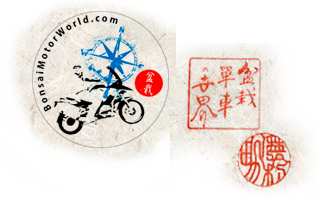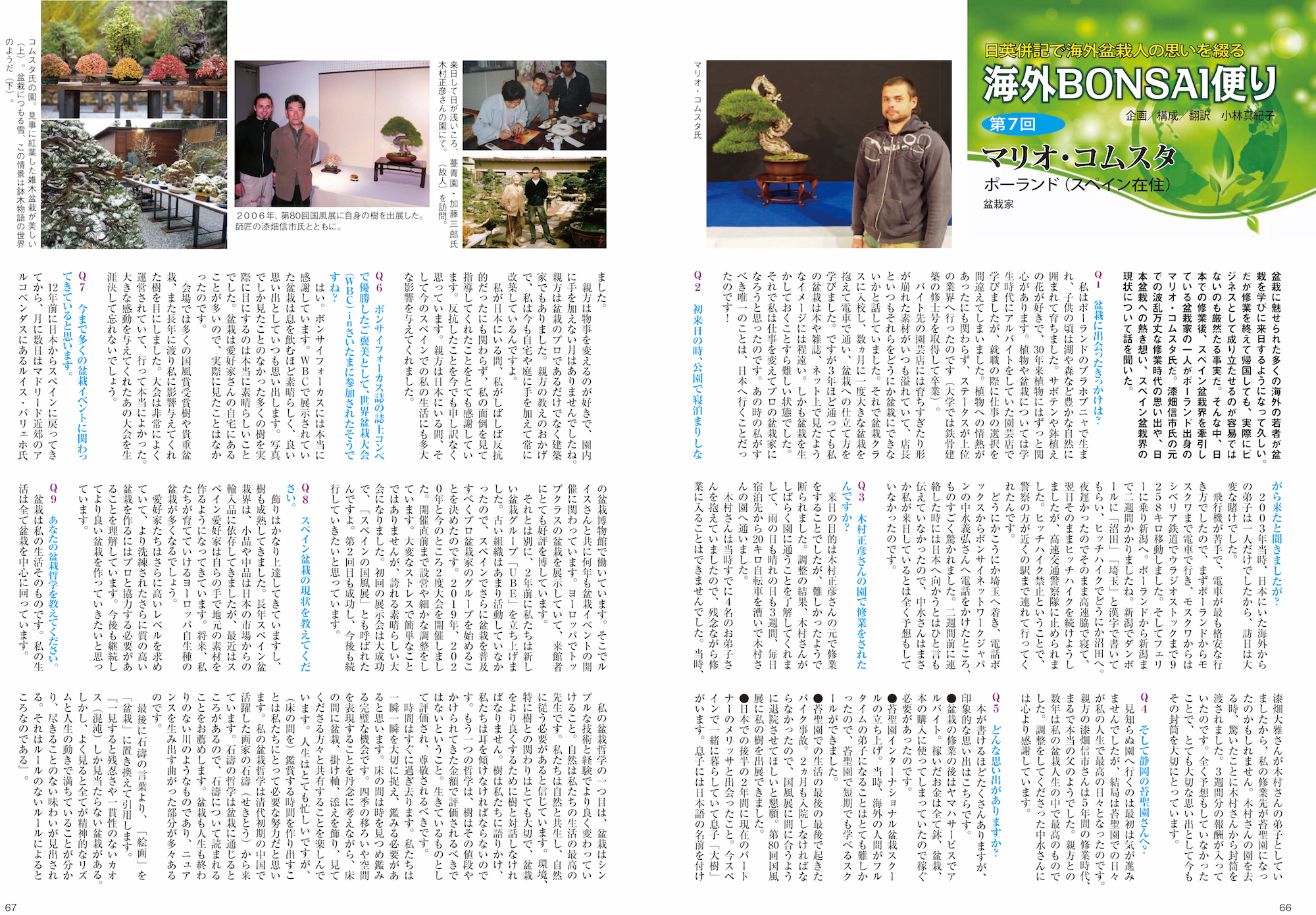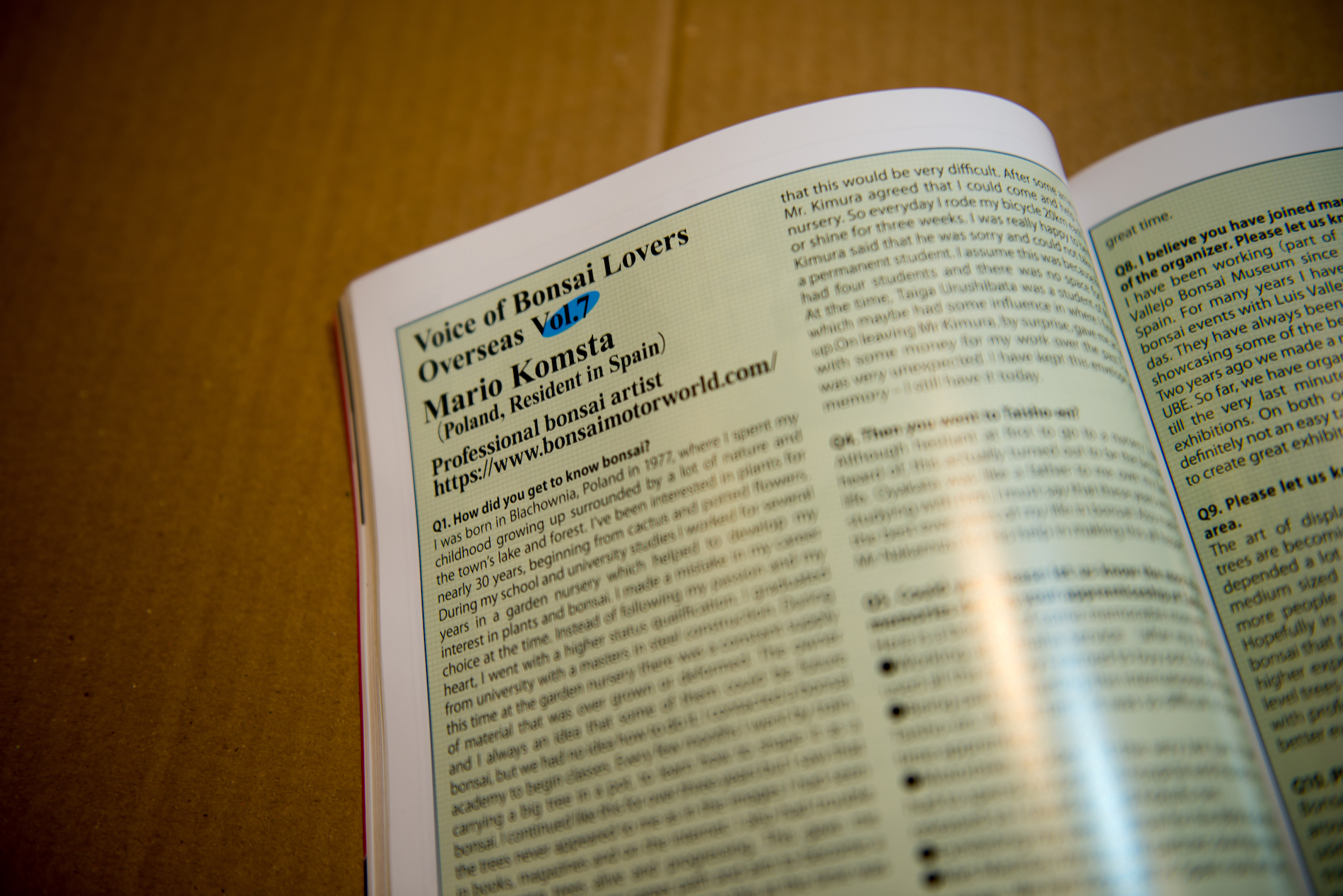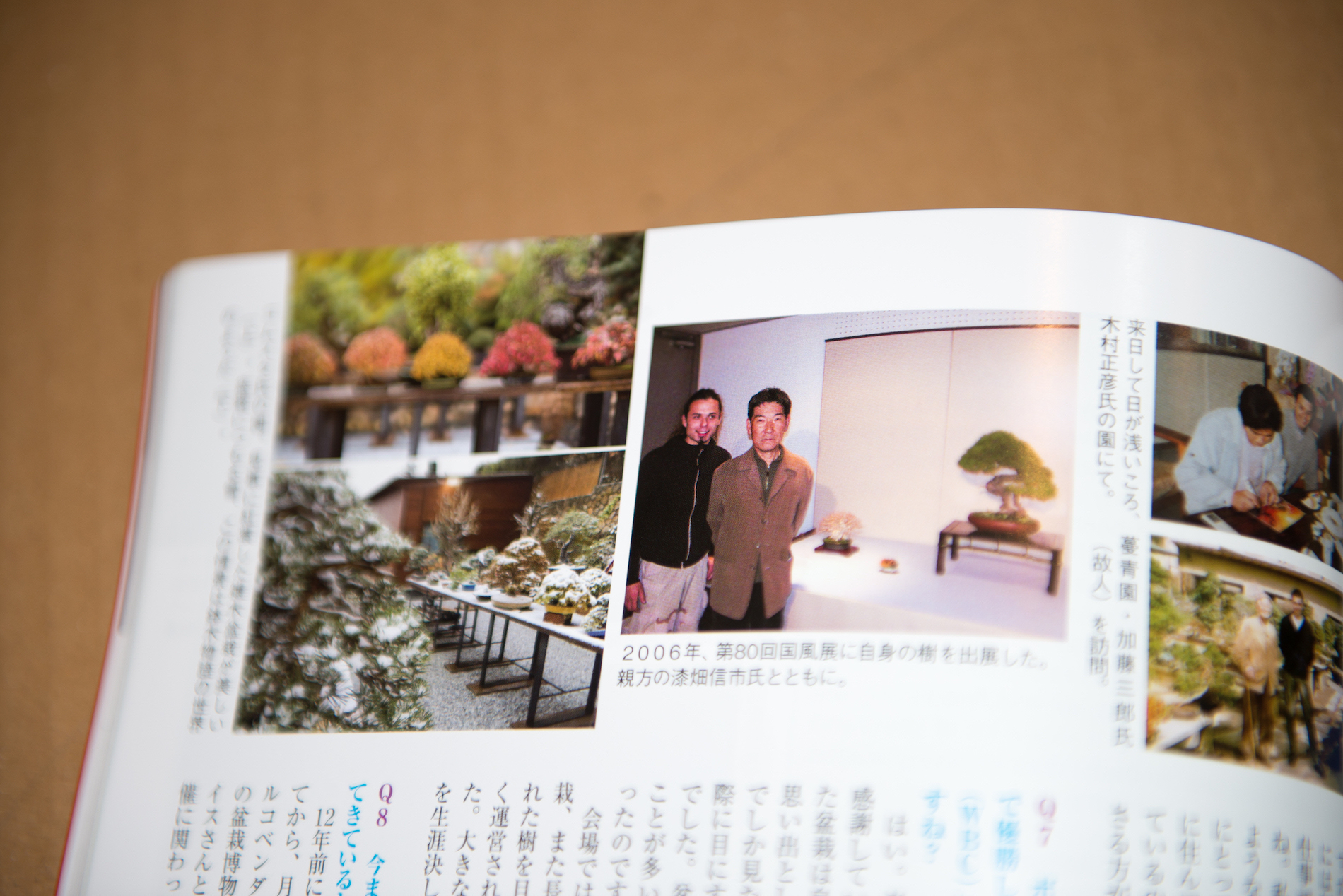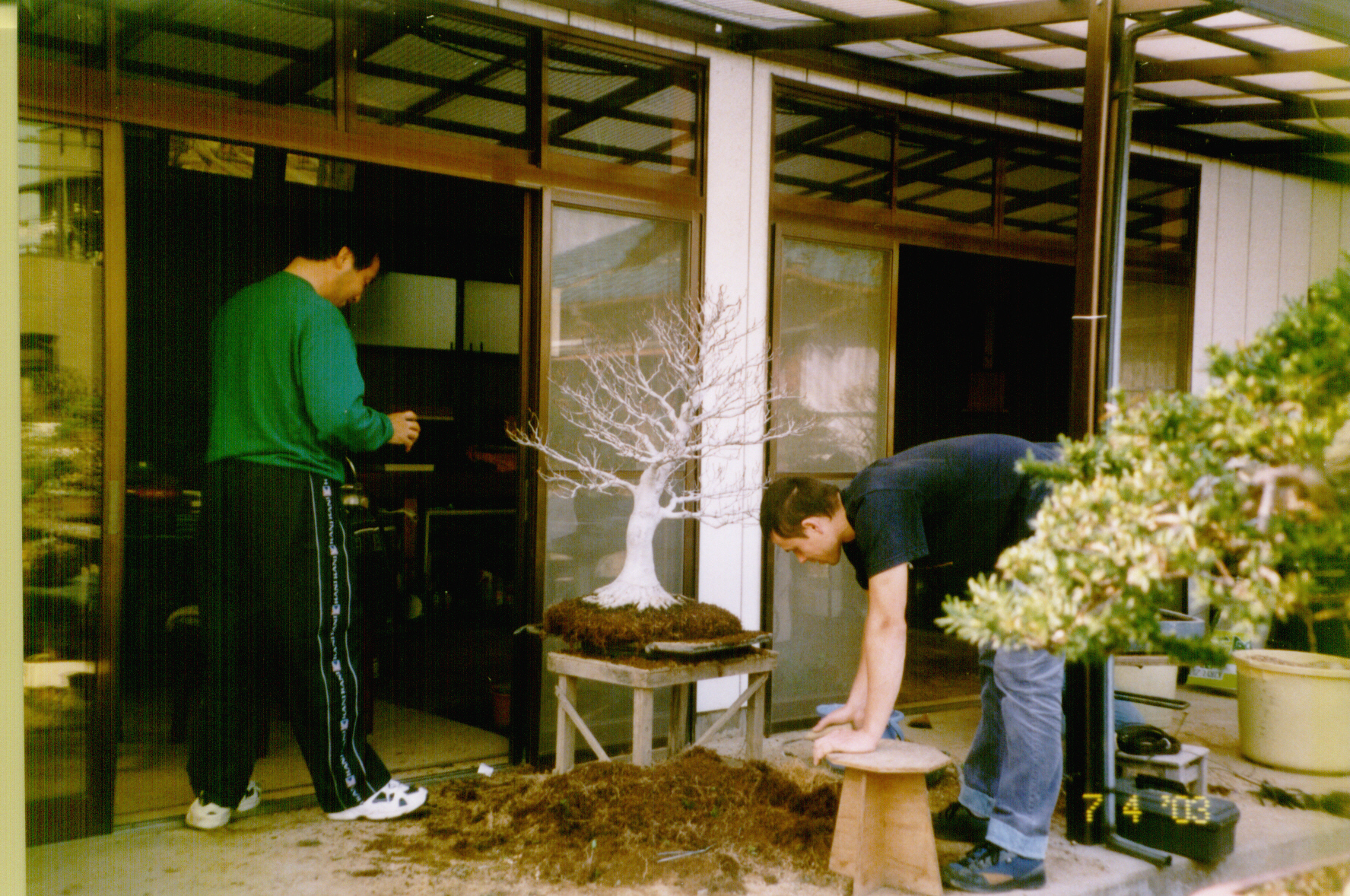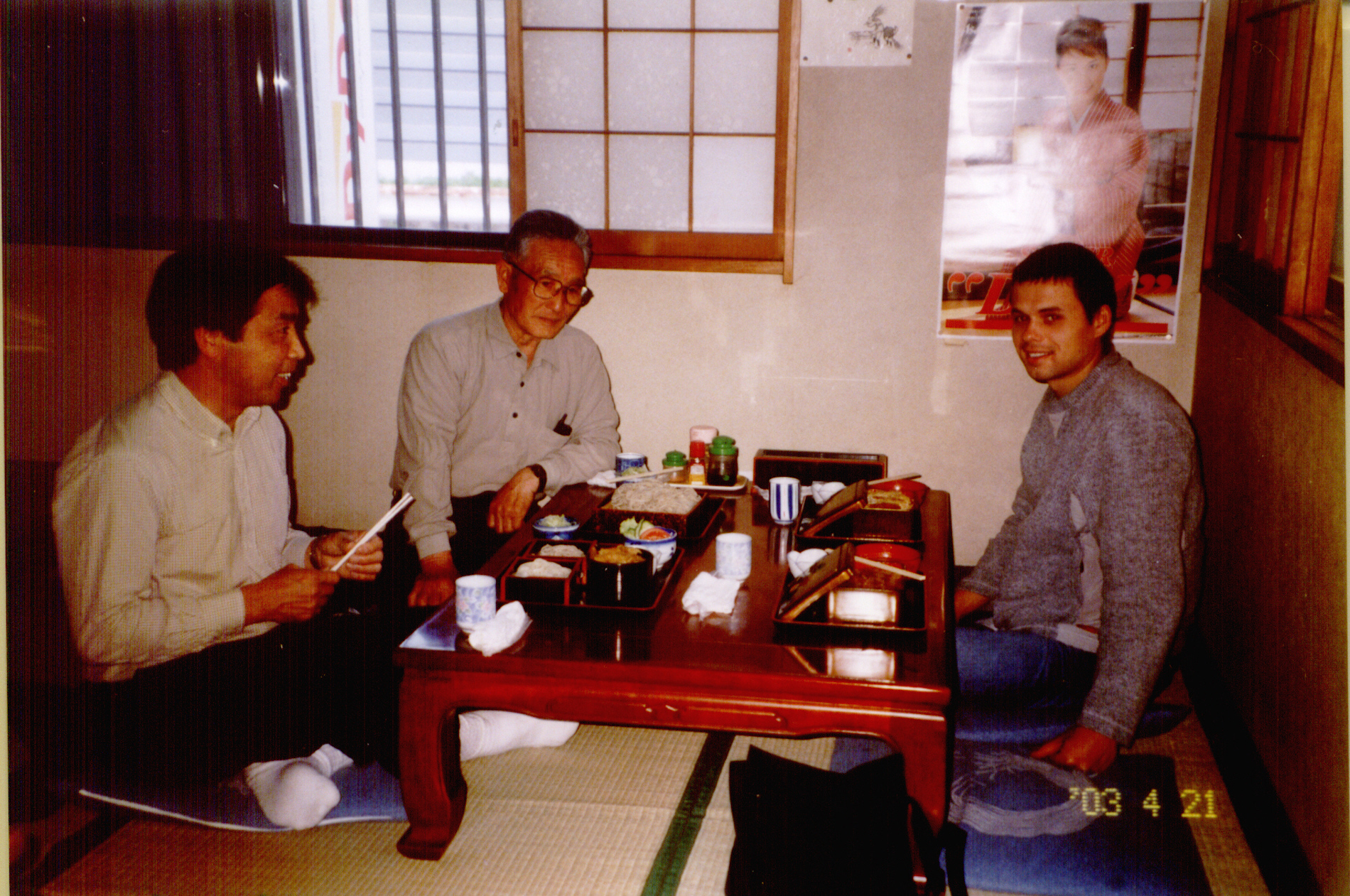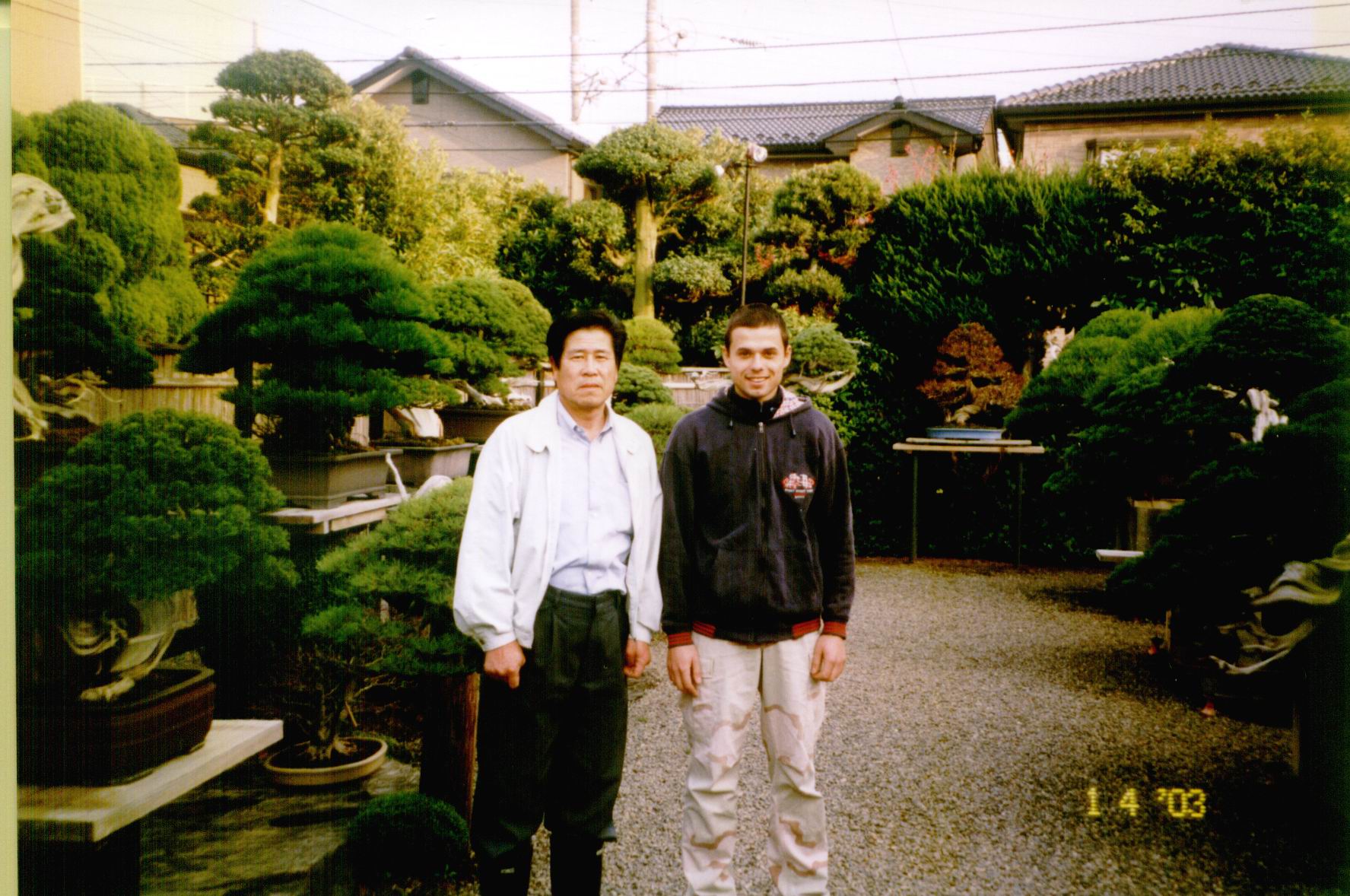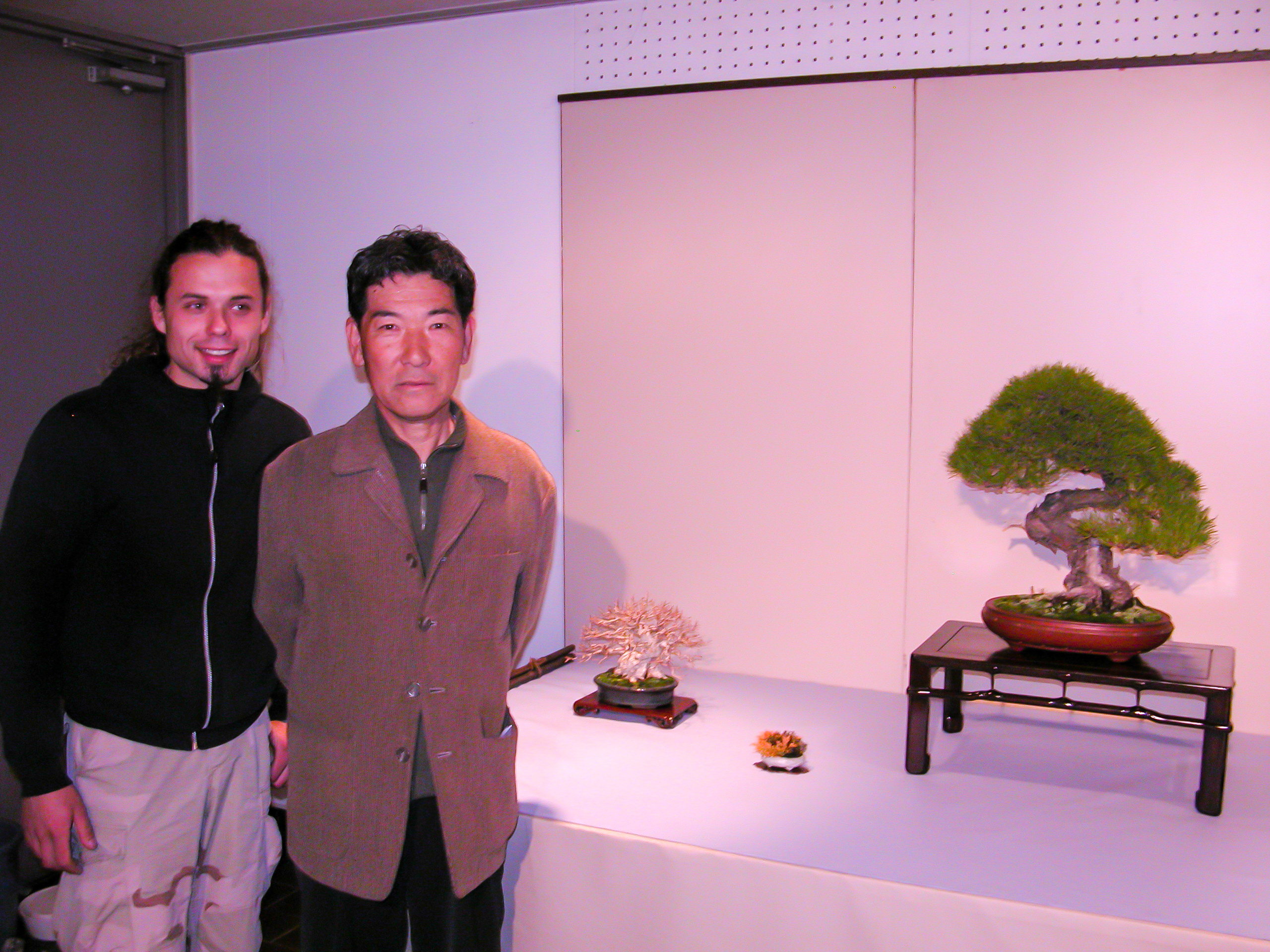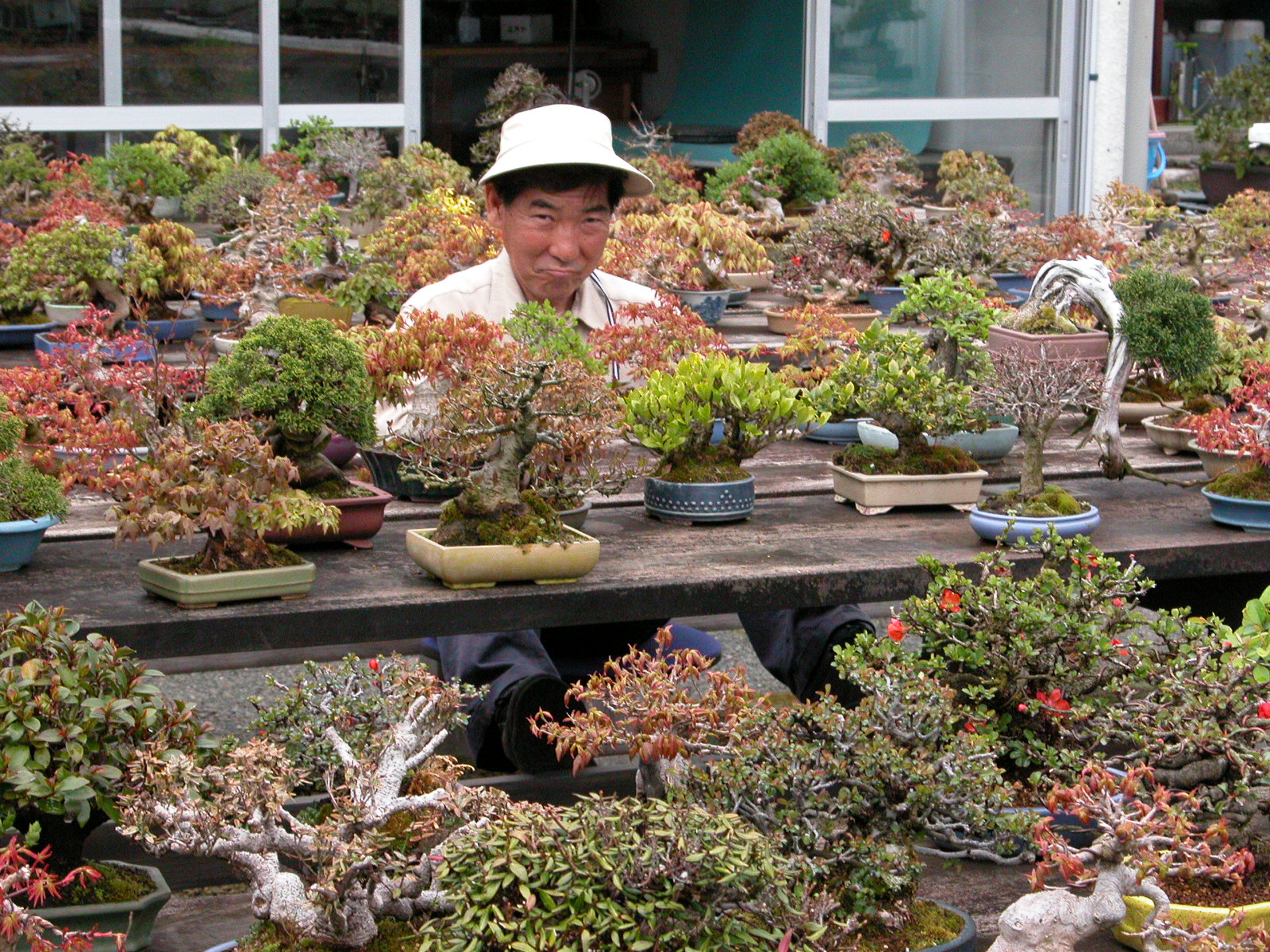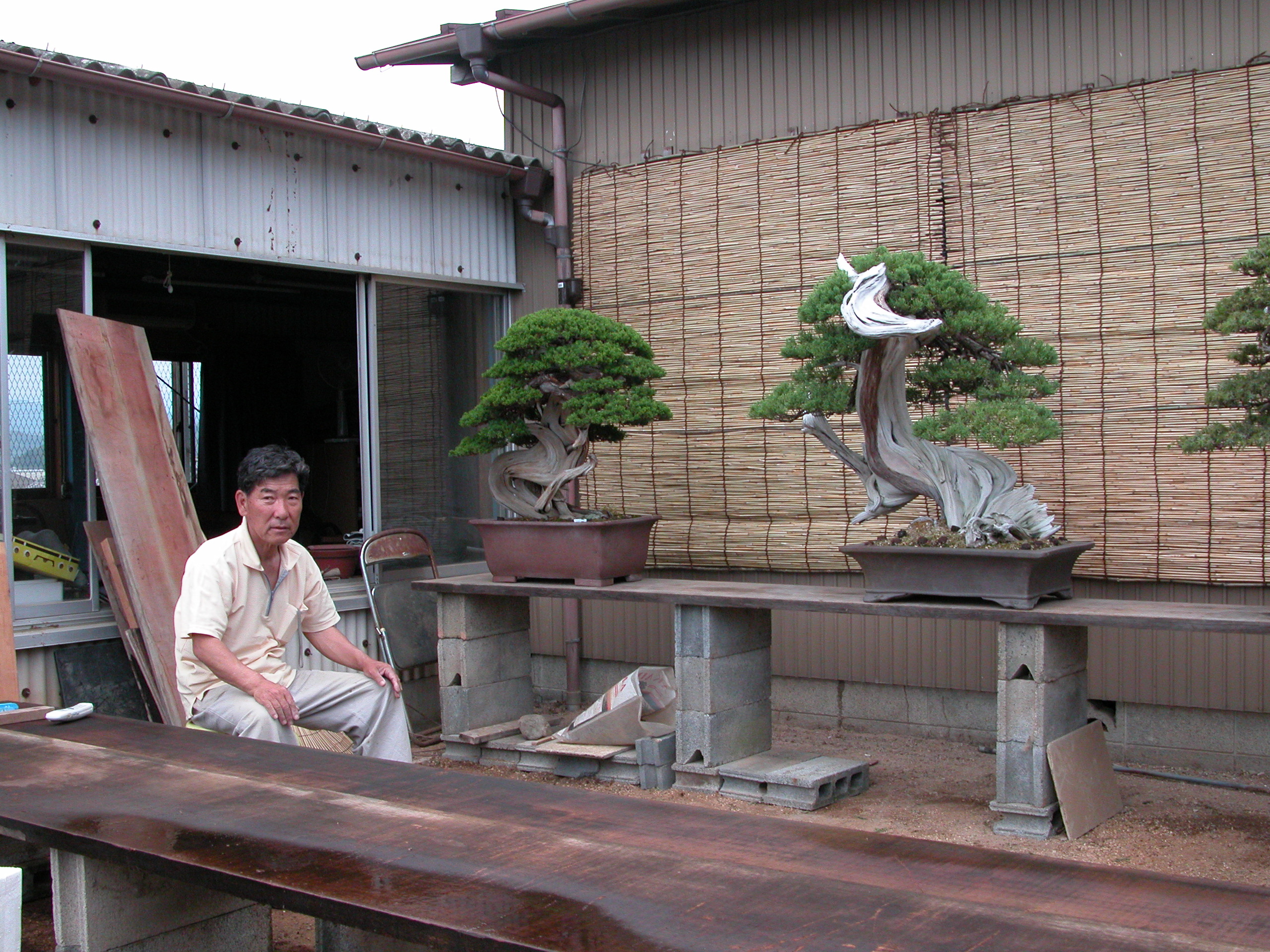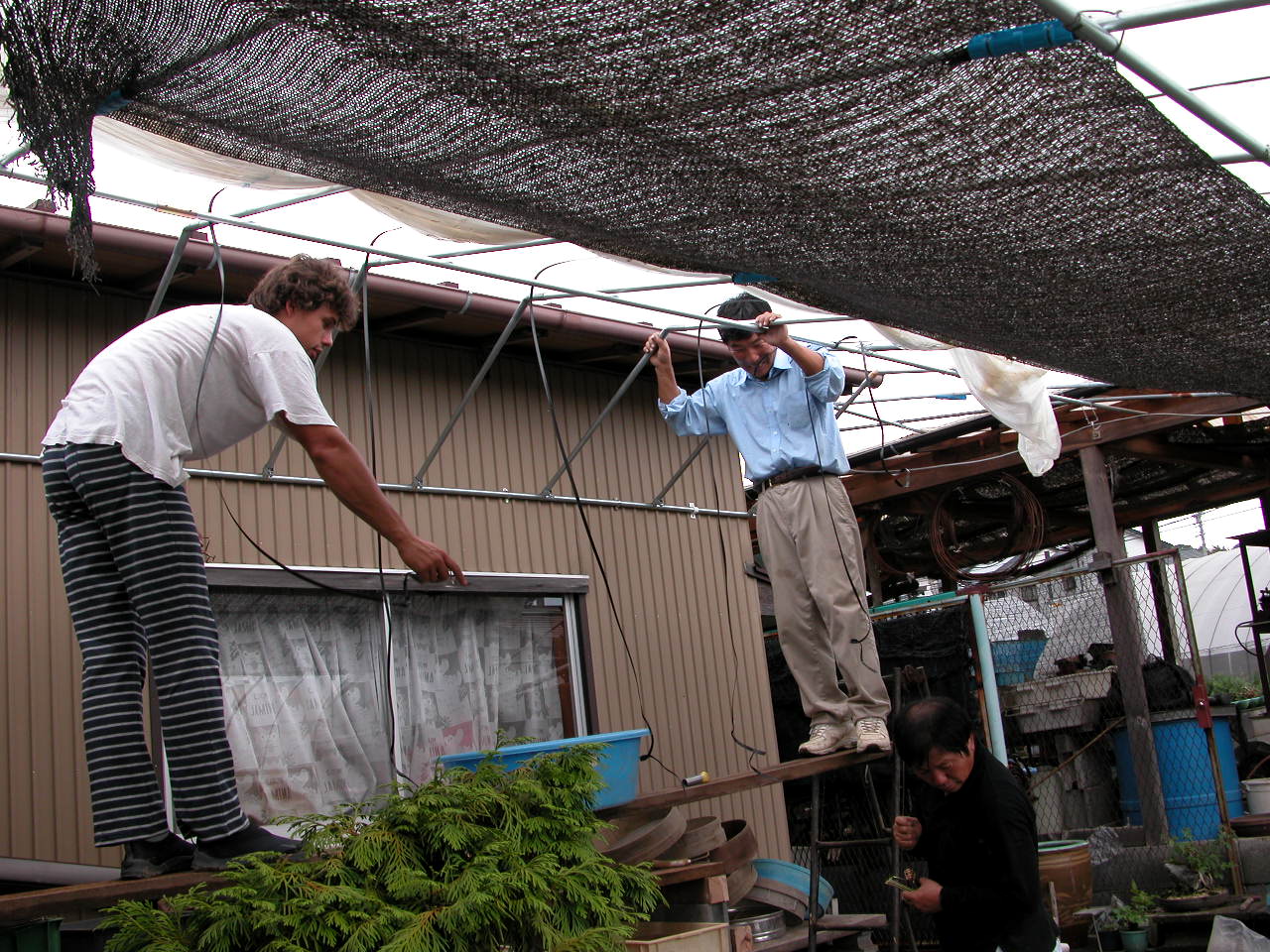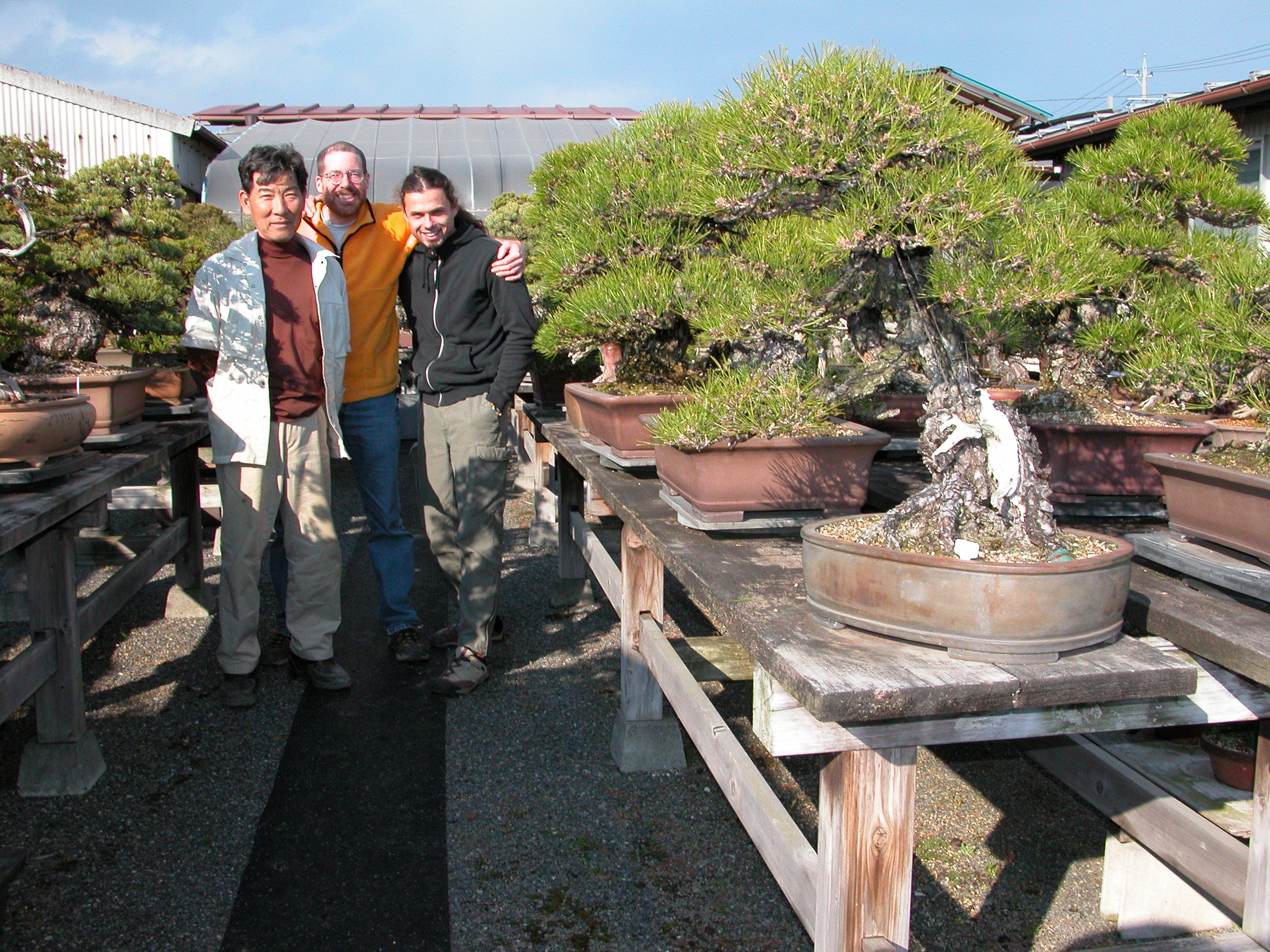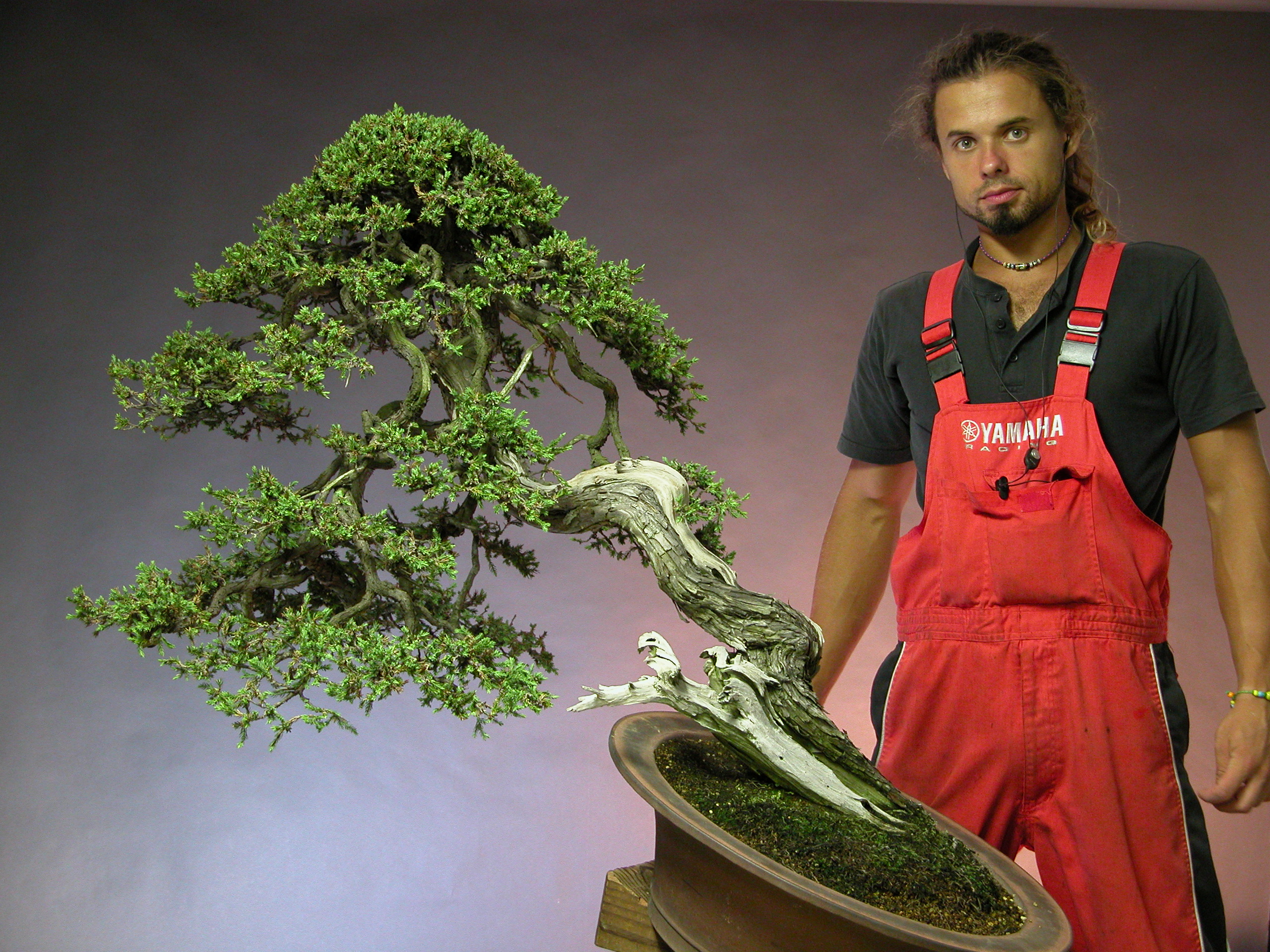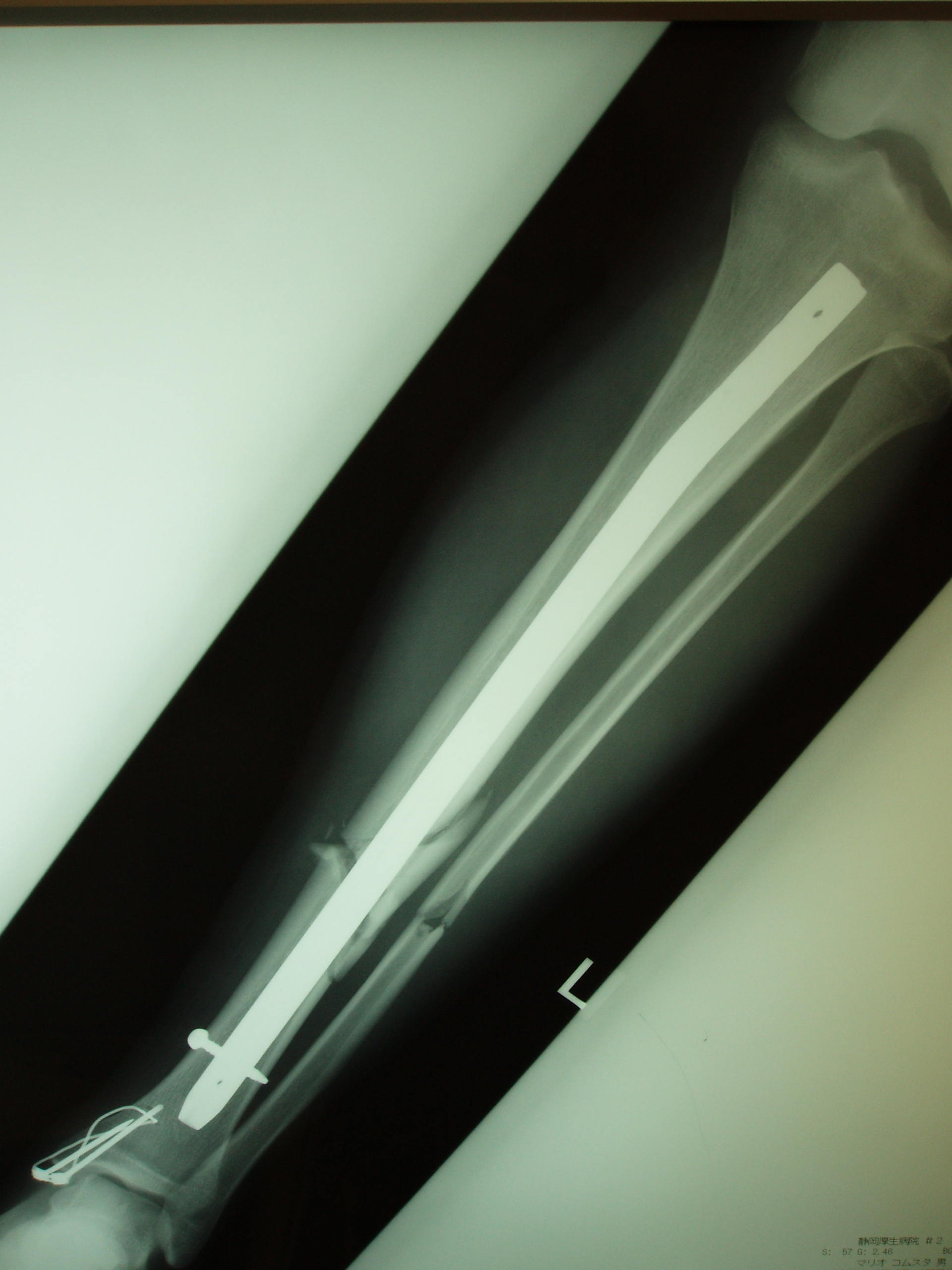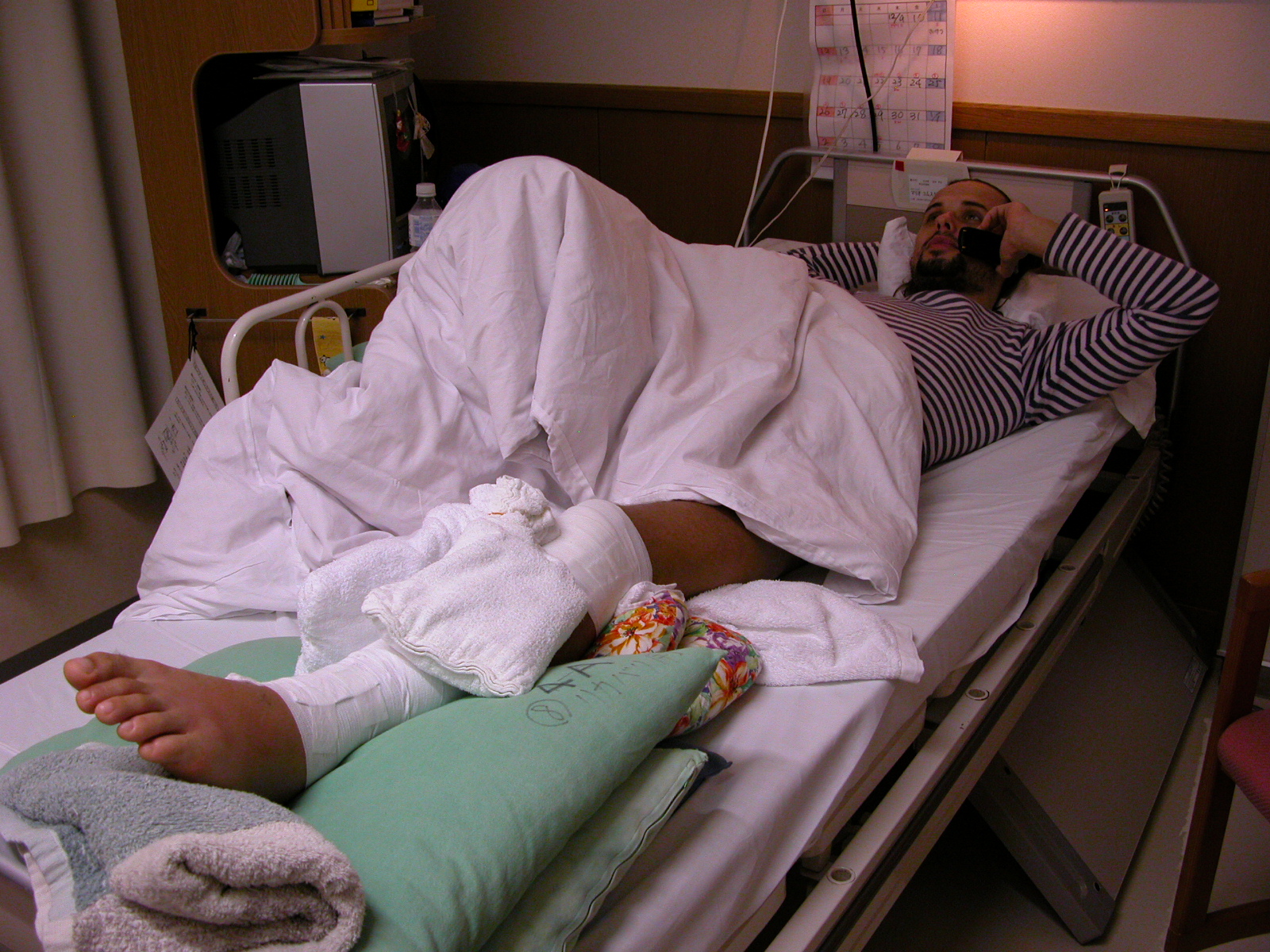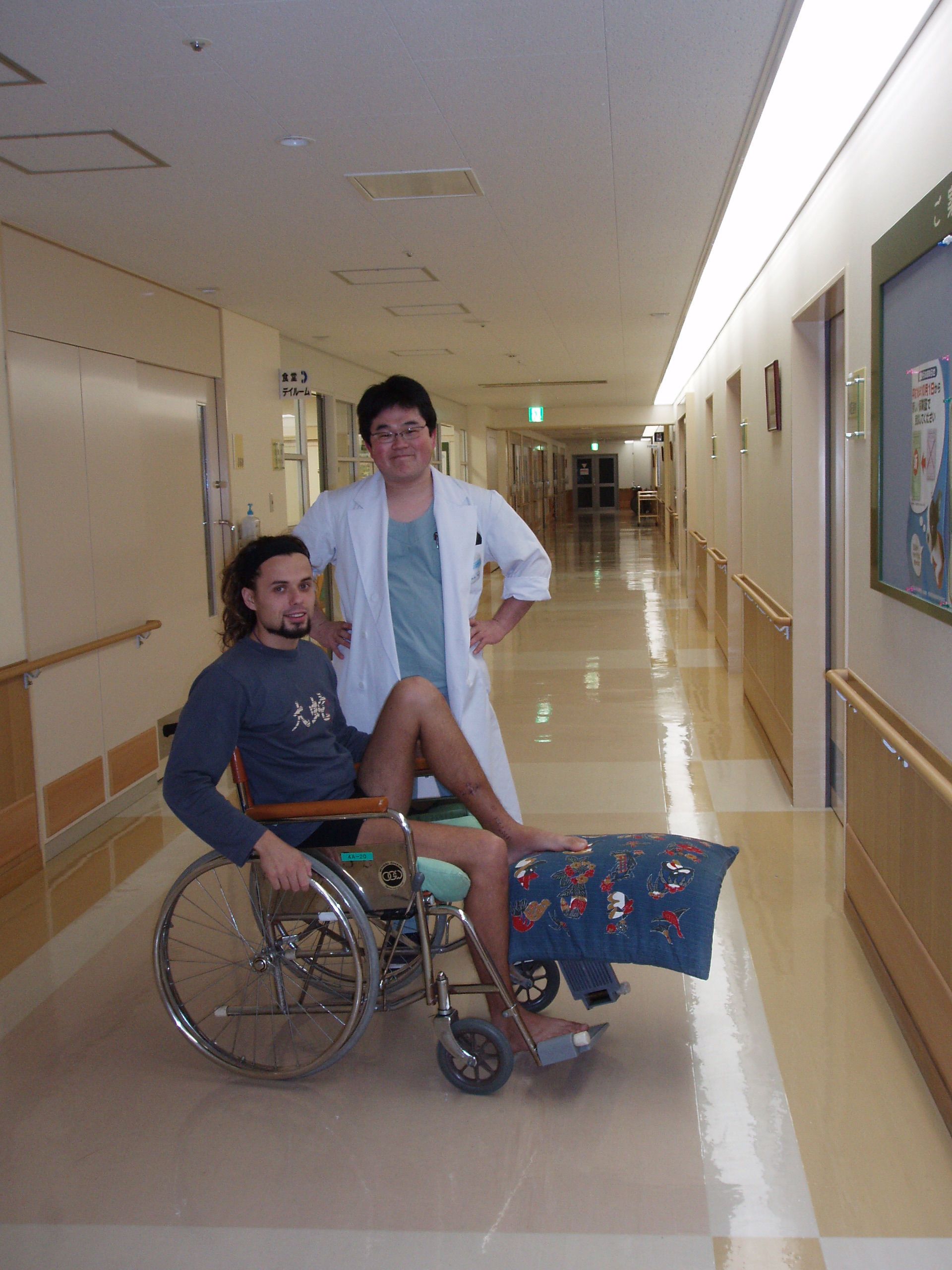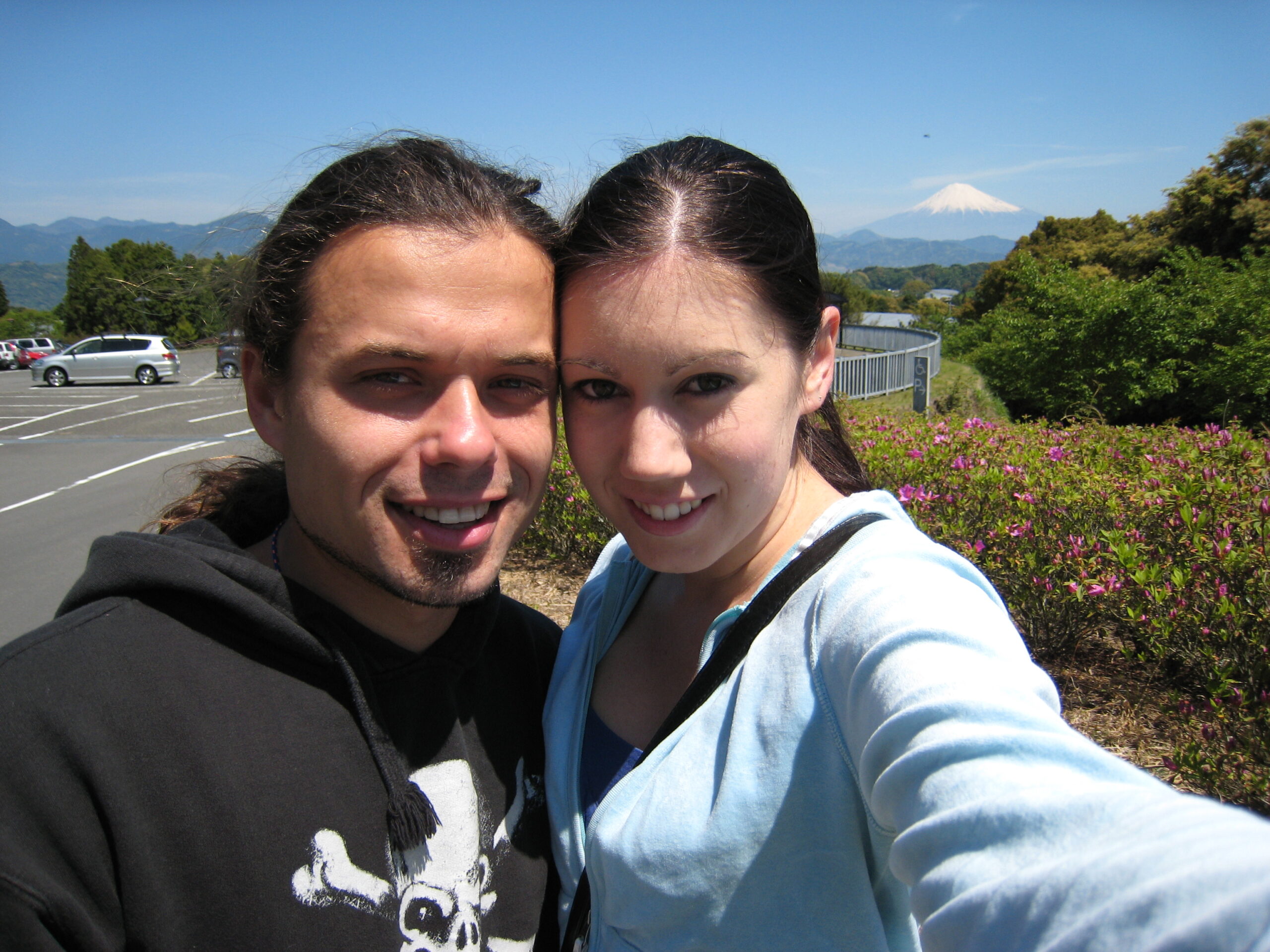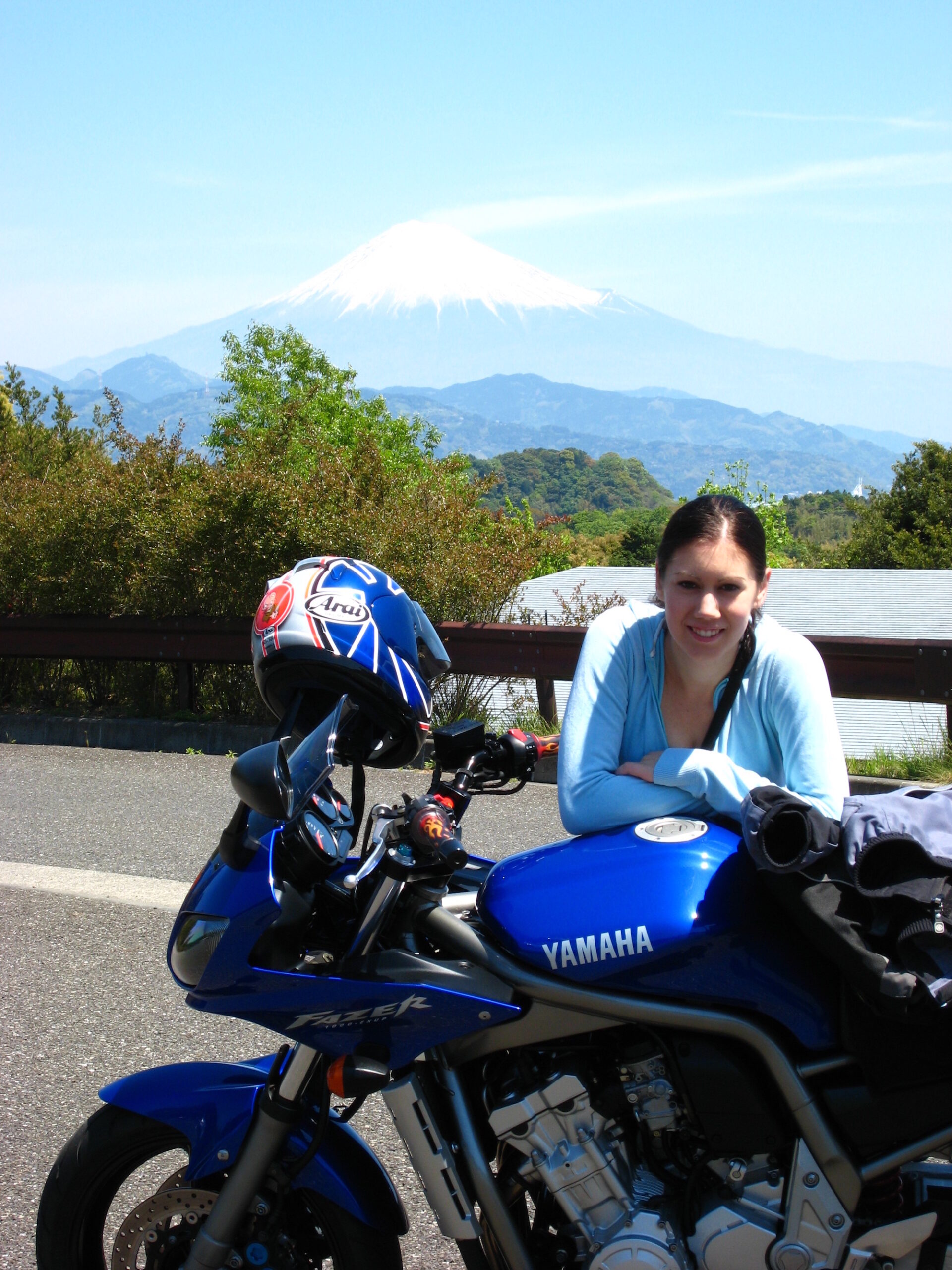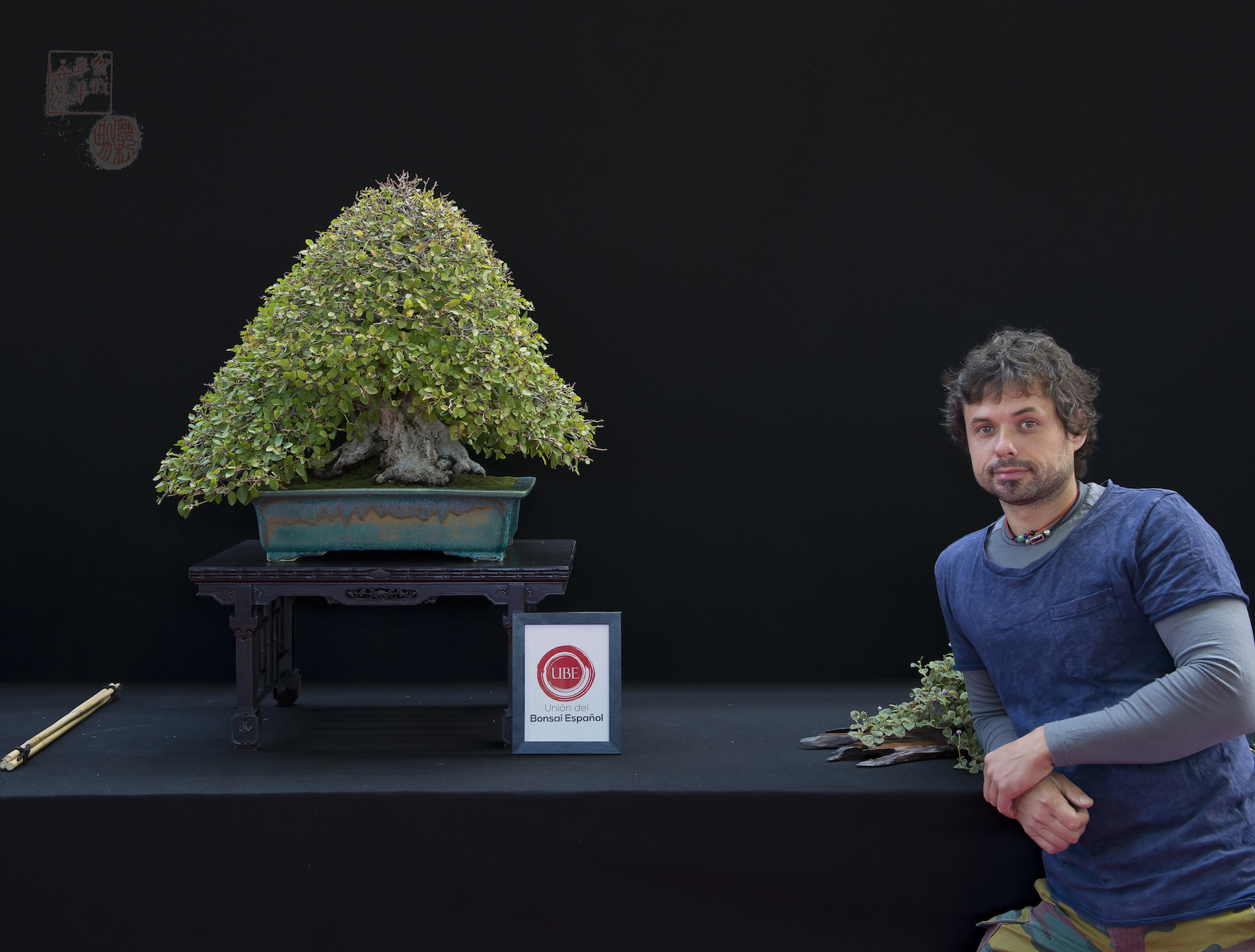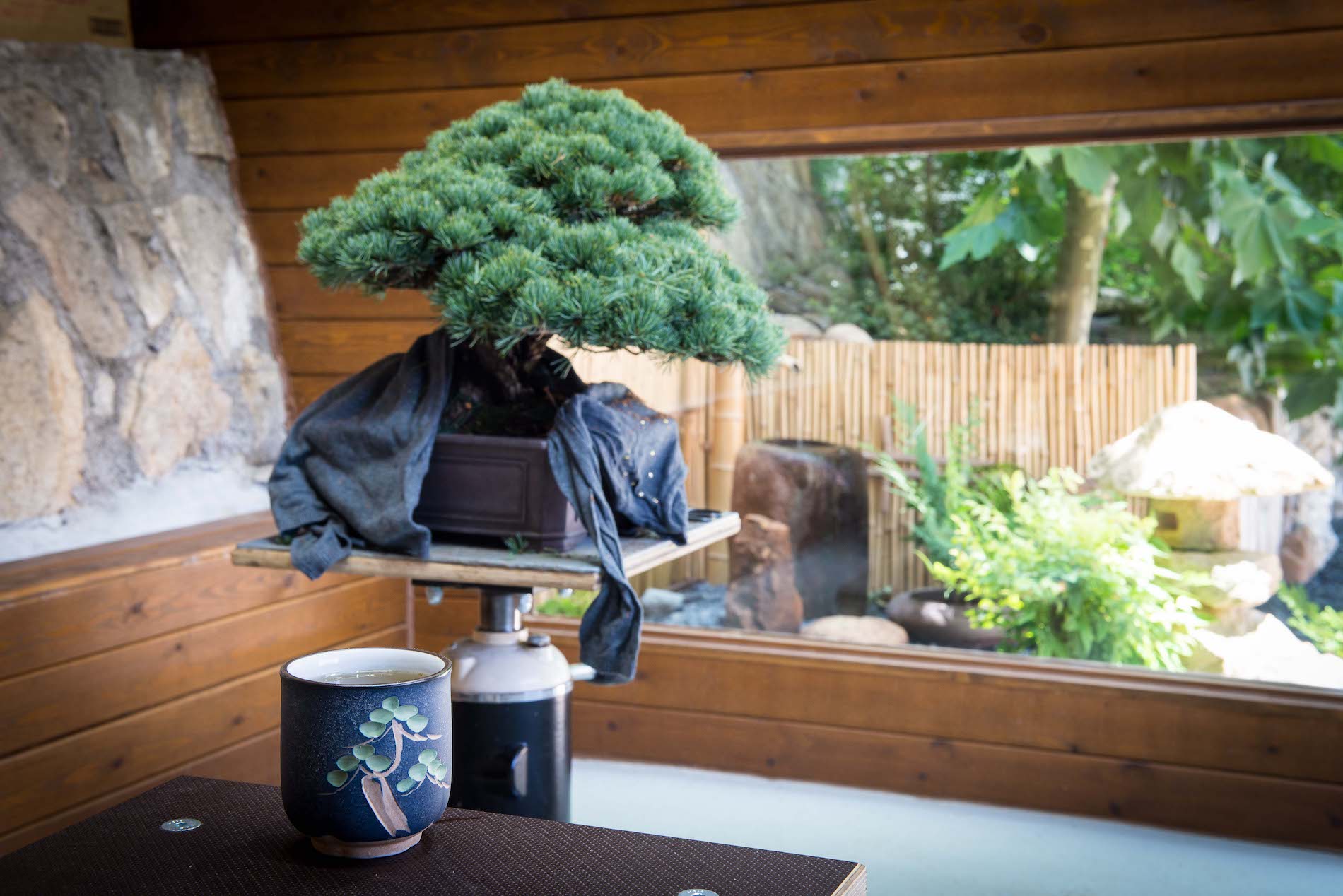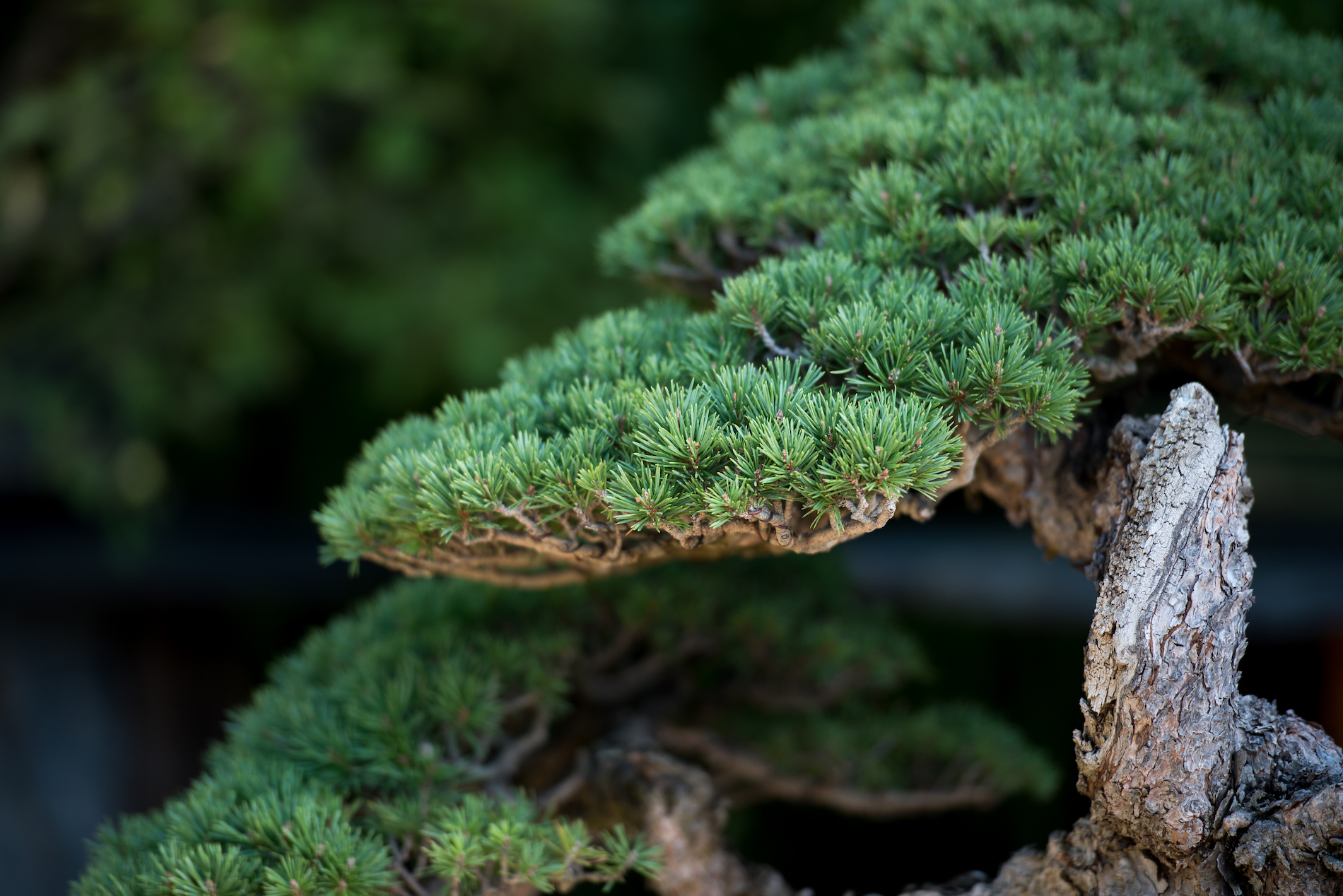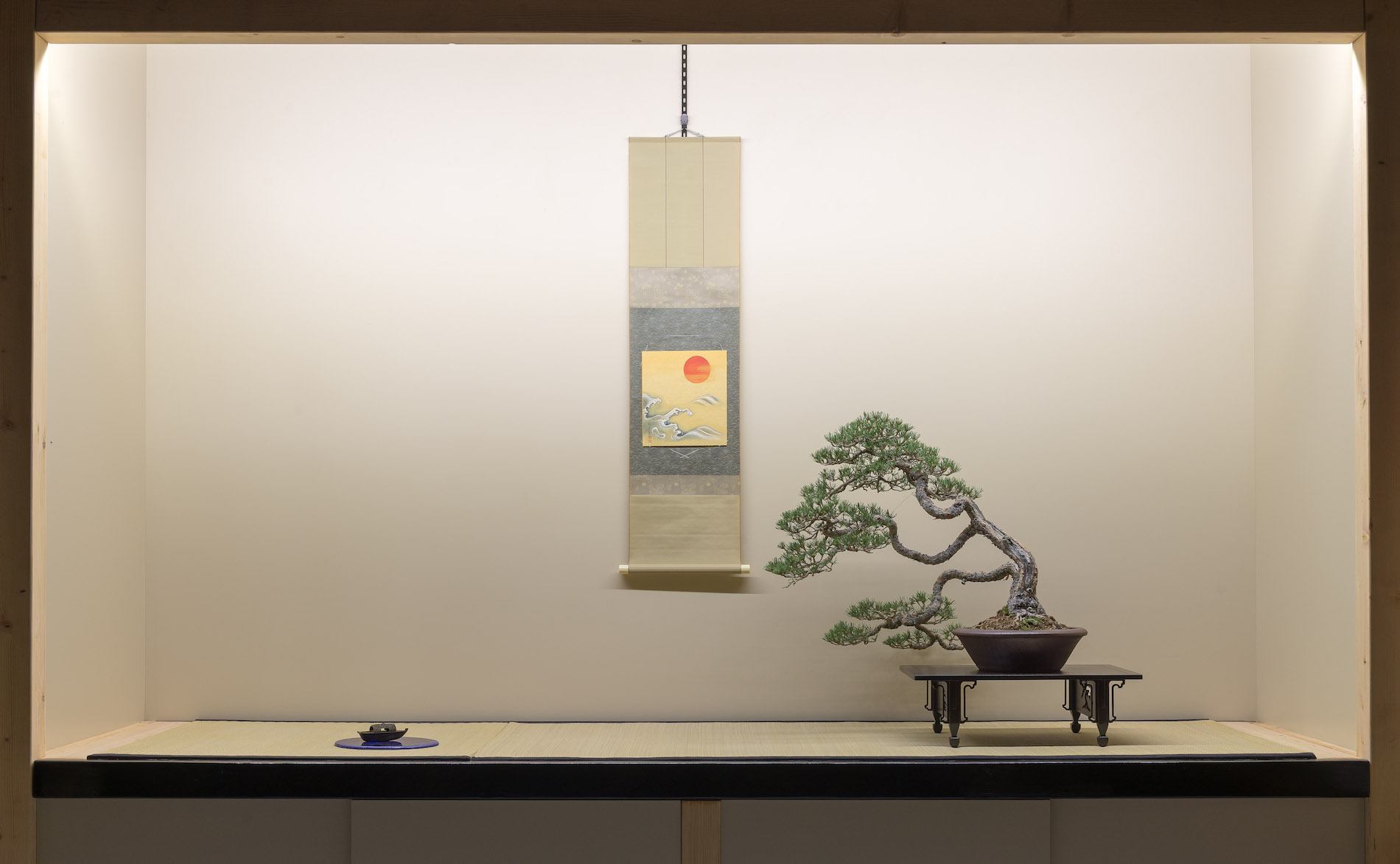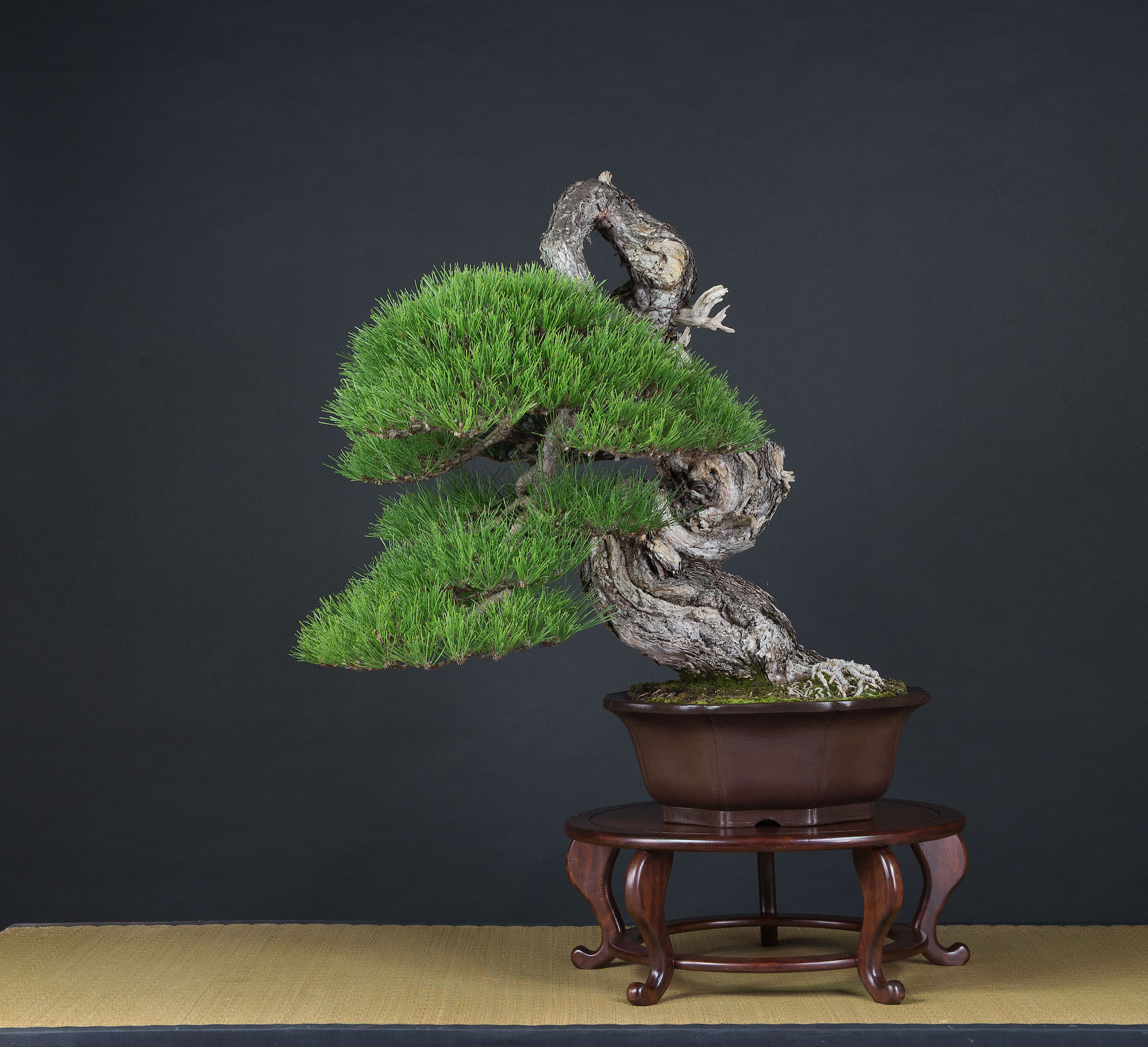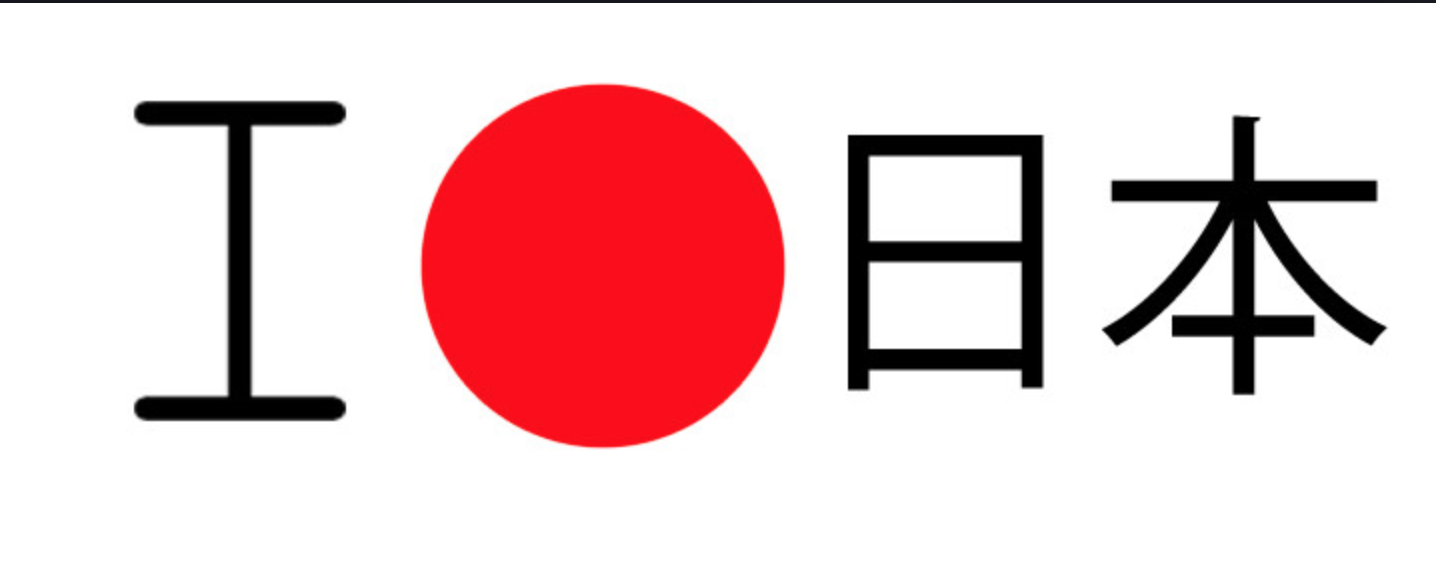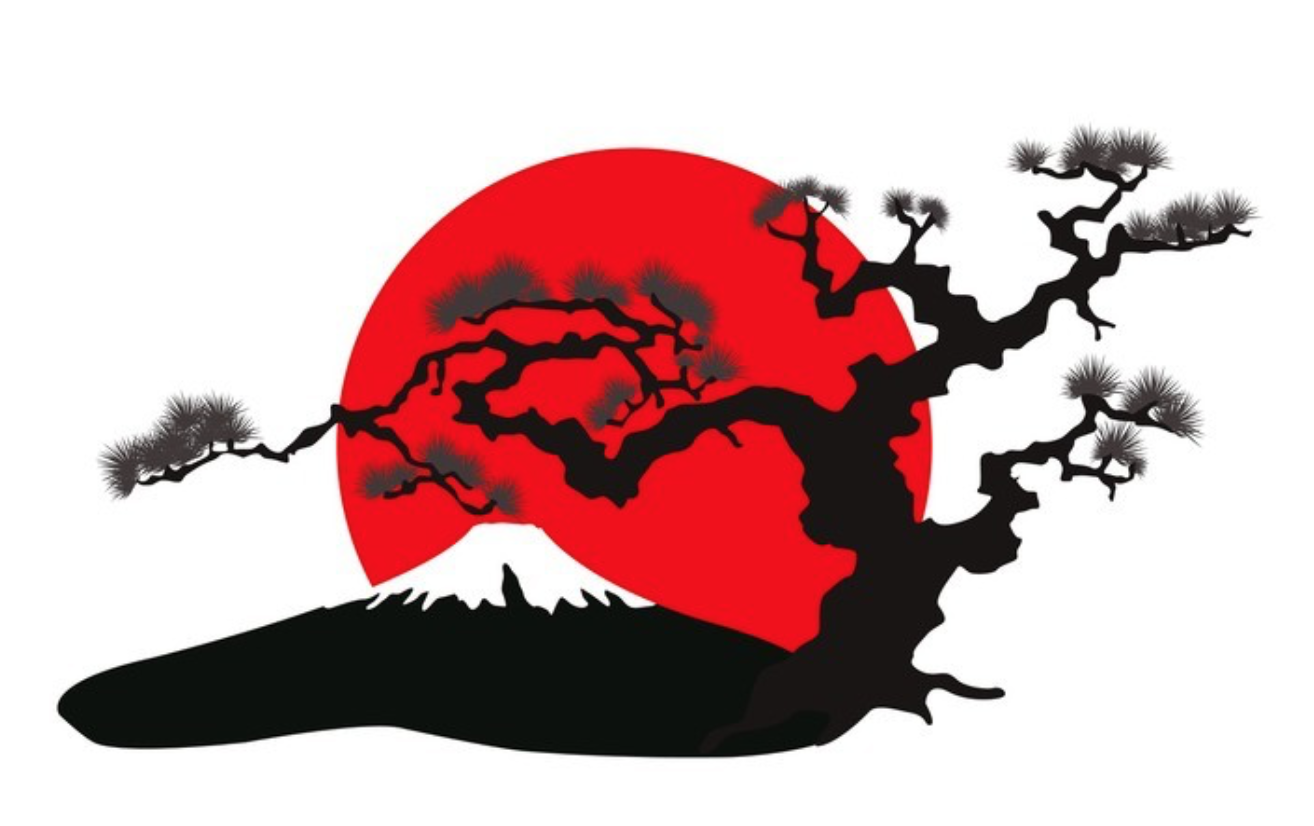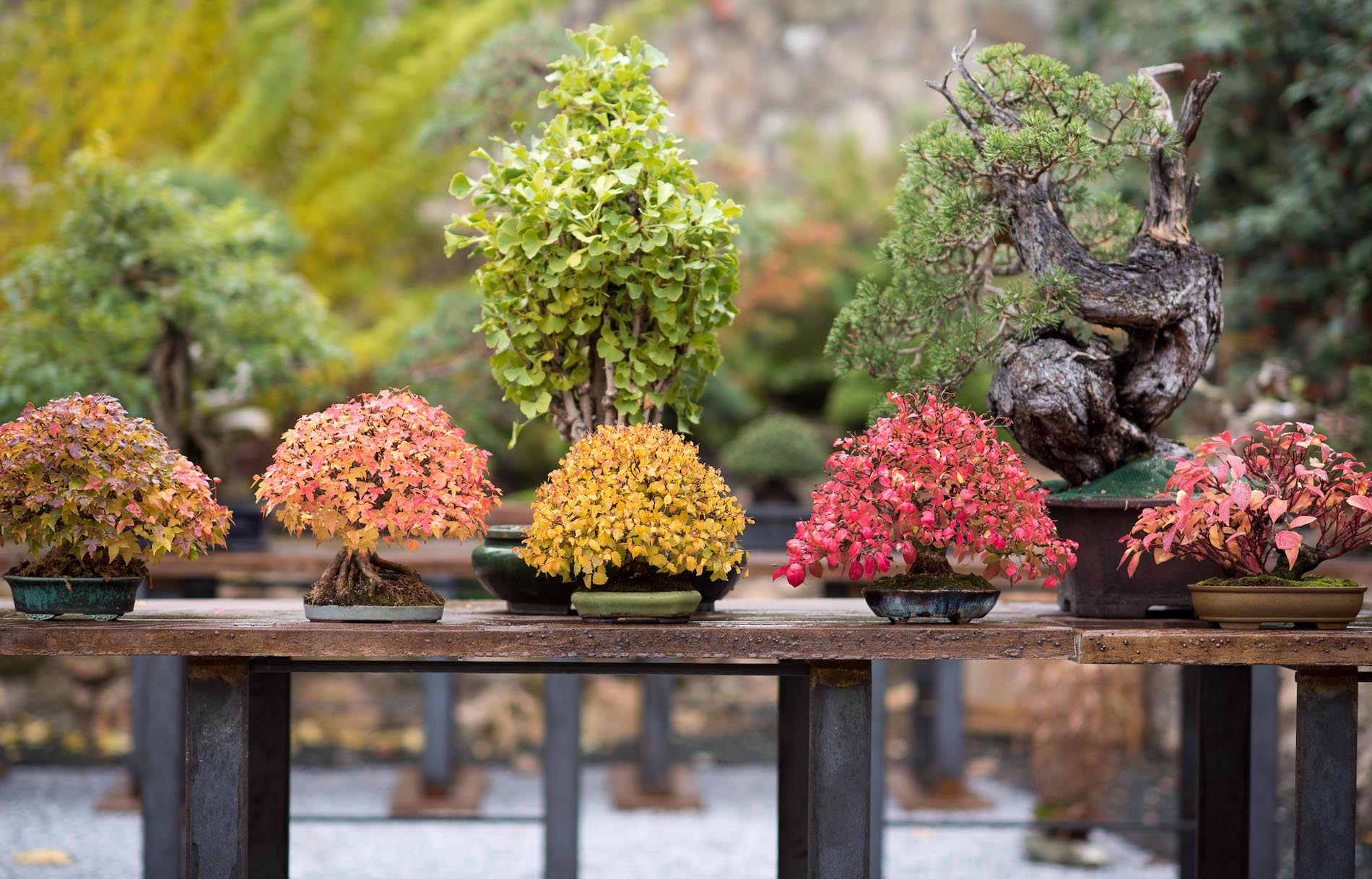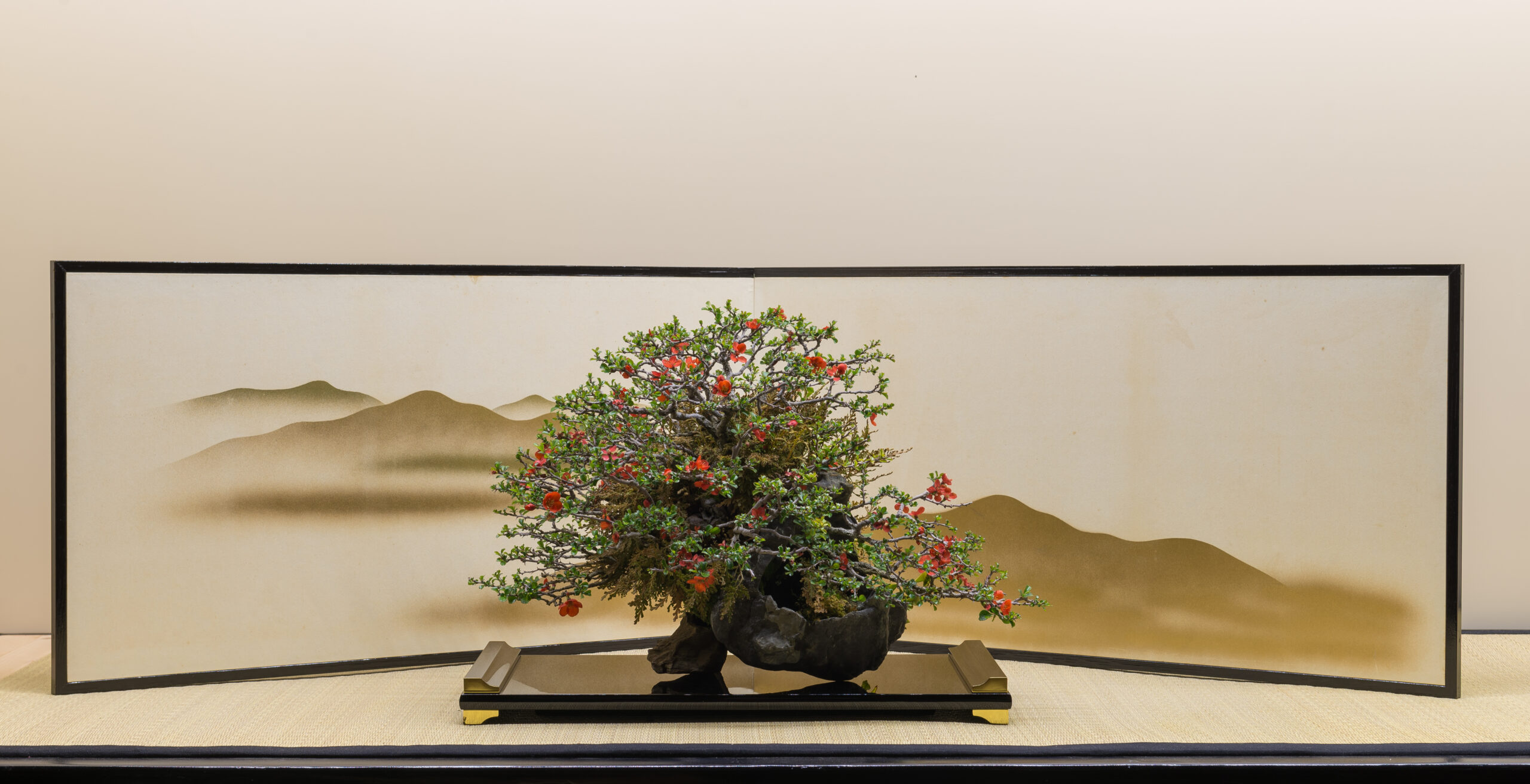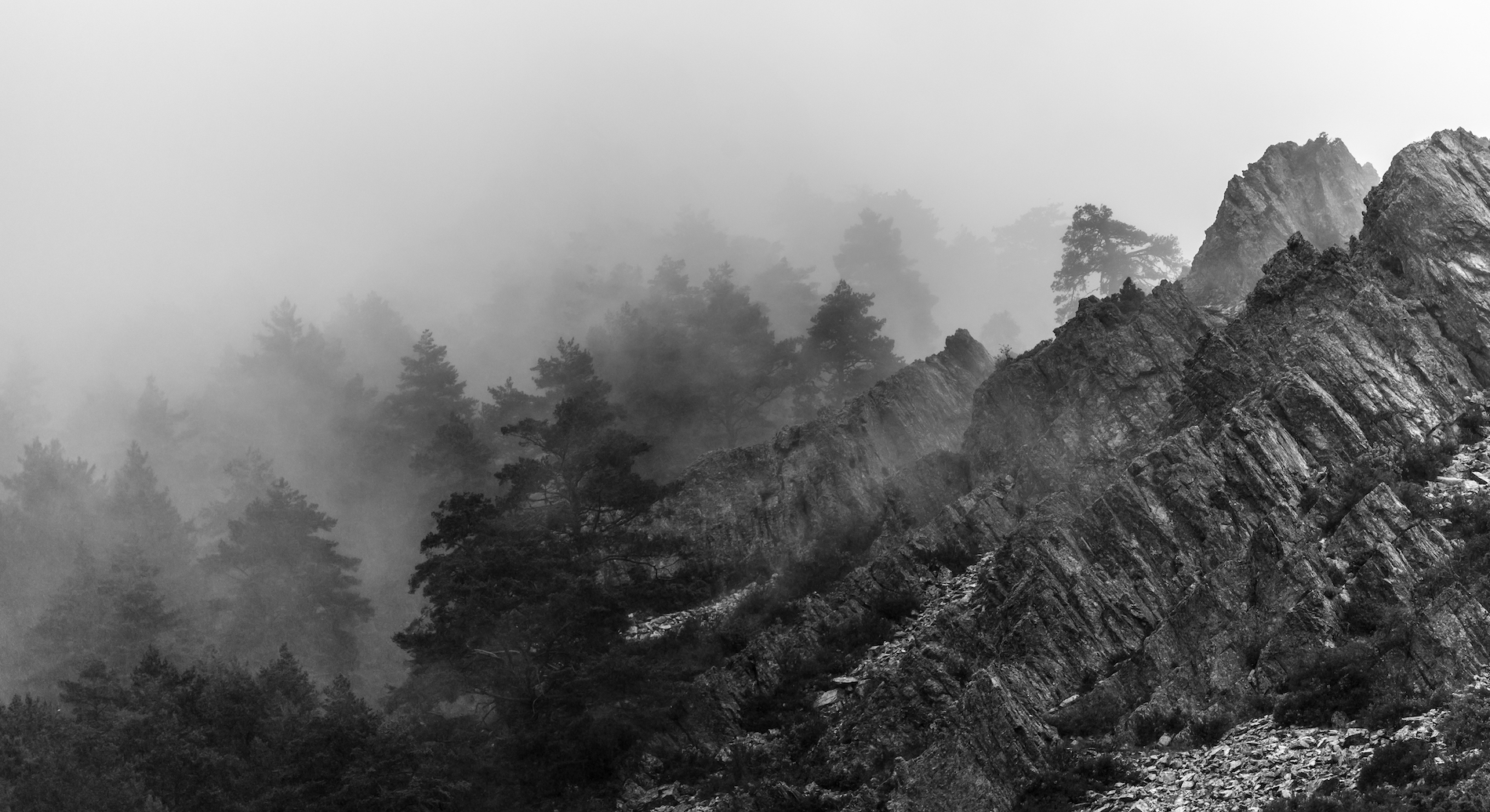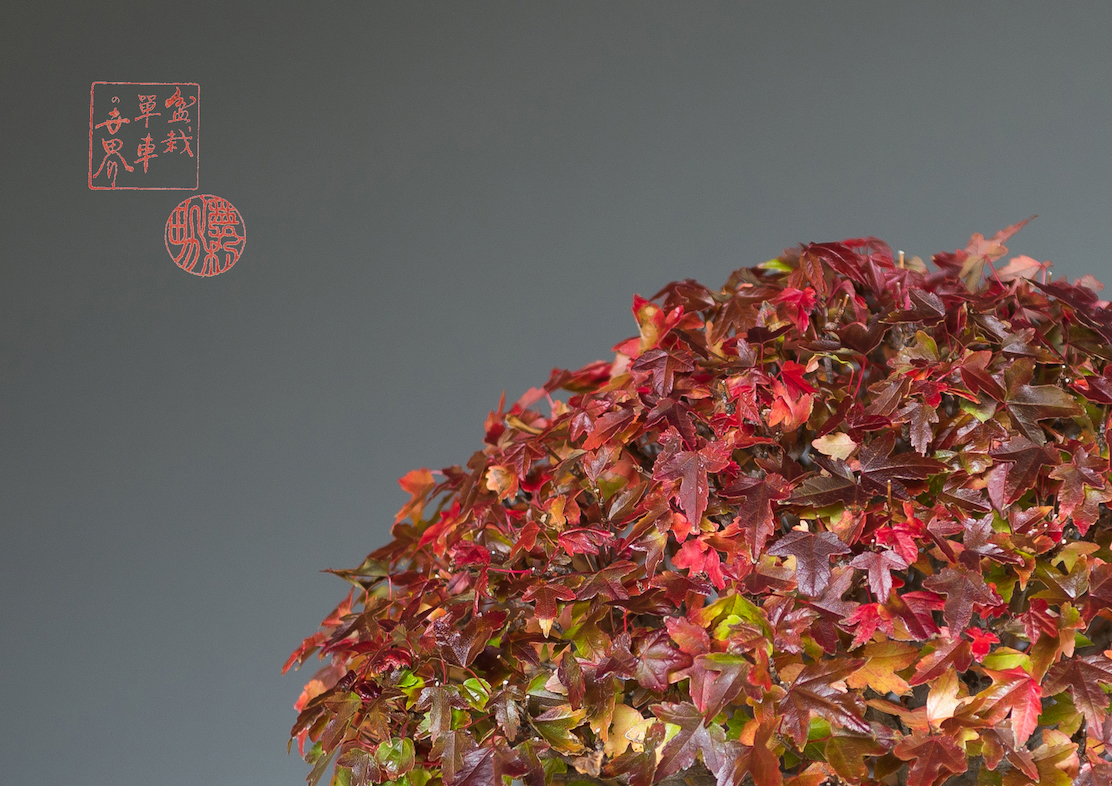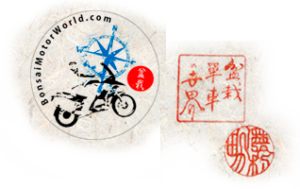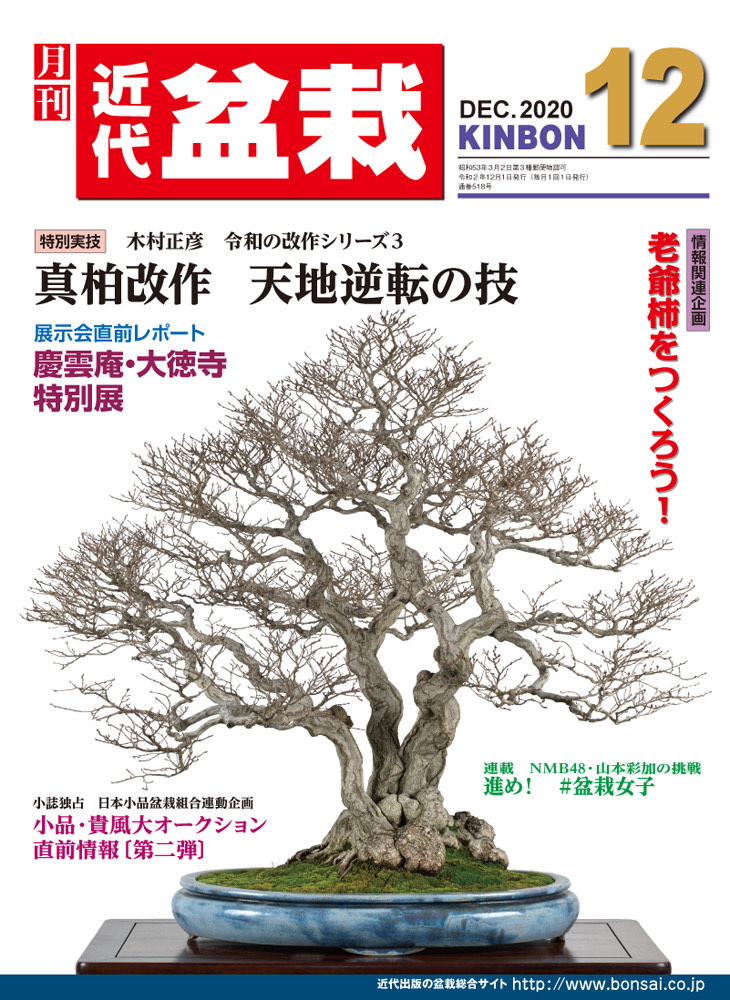
KINBON bonsai magazine full interview
1 Your name, bio, profile and title
Mario Komsta – Bonsai Professional
I was born in Blachownia, Poland (1977), where I spent my childhood growing up surrounded by a lot of nature and the town’s lake and forest. Some of my hobbies as a teenager included; climbing, fishing, hiking, mountain biking and gardening. Later on I also enjoyed travelling. This included by car, bicycle, train and hitchhiking. Almost every mode, apart from flying. Till now, I am still scared of air travel; if someone wanted us to fly then we would have wings, but we don’t! During my younger years I saw almost all of Europe and travelled a lot with my family and later on with my friends. We usually always camped or slept anywhere we could.
Despite being from a small town, I have always had a big sense of adventure.
2 How did you get to know bonsai & get to be completely absorbed in bonsai world?
I’ve been interested in plants for nearly 30 years, beginning from cacti and potted flowers. Later I learnt that the potted flowers were called ‘accent plants/kusamono’. I am still passionate about them and currently have a broad collection. During my school and university studies I worked for several years in a garden nursery which helped to develop my interest in plants and bonsai.
I made a mistake in my career choice at the time. Instead of following my passion and my heart, I went with a higher status qualification. I graduated from university with a masters in steel construction – absolutely nothing to do with plants. However, this has helped me with the technical know-how of making bonsai as well as being a better handyman! In hindsight I should’ve studied agriculture.
During this time at the garden nursery there was a constant supply of material that was over grown or deformed. The owner and I always an idea that some of them could be future bonsai, but we had no idea how to do it. I contacted a bonsai academy, owned by Wlodek Pietraszko, to begin classes. Every few months I went by train, carrying a big tree in a pot, to learn how to shape it as a bonsai. I continued like this for over three years but I saw that the trees never appeared to me as in the images I had seen in books, magazines and on the internet. I also had trouble with keeping trees alive and progressing. This gave me motivation to change my career path and aim to become a bonsai professional. The only way to to this at the time was to go to Japan!
3 I heard from Mr. Nakamizu the funny story about your first day in Saitama. You came to Saitama by automobile and spent the night in a park? How did you become the apprentice of Mr. Nobuichi Urushibata after that?
Basically we (my ex-girlfriend and I) came on a one-way ticket to Japan with the only option being that I would end up as someone’s bonsai apprentice. As far as I knew in 2003, there was only one other foreign apprentice in Japan so this was a big risk for me. We travelled by train from Poland to Moscow as this was the cheapest option (also remembering that I am afraid to fly). We took the Trans-Siberian railway all the way to Vladivostok (9258km) and then a took a ferry to Niigata. This whole journey from Poland to Japan took more than two weeks. In Niigata, we asked a Japanese girl from the ferry to write ‘NUMATA’ and ‘SAITAMA’ in Kanji on a piece of cardboard. We hitchhiked and ended up in Numata. It was late evening when we arrived and so we slept by the side of the highway, in a parking area on some grass. I remember that it was so cold that we had to put our legs in our backpacks to try to keep warm. When we woke up we were covered in frost! That morning we wanted to continue hitchhiking but were stopped by a highway patrol guard. He told us that hitchhiking was forbidden in Japan and led us to the nearest train station. Finally, we ended up in Saitama. We called Mr Nakamizu from a phone box on our arrival and he was
extremely surprised, not at all expecting us as the last contact we had with him was over two weeks ago when we told him that we were leaving for Japan.
How I became Mr. Nobuichi Urushibata’s apprentice is quite a long story but here I’ll try and explain a shorter version. I am unsure of the exact details of how it finally happened, but this is what I remember from my side:
Mr Nakamizu picked us up in Kazo station if I remember correctly. After speaking with him for a bit, he asked me with whom I wanted to study. I had prepared a few motivation letters for Hamano, Kimura and Kobayashi, among others. A funny thing was that there was so little information in Europe about Japan and Japanese bonsai, that we didn’t even know that Hamano had already passed away.
My aim was really to study with Mr Kimura but I was told that this would be very difficult. Anyway, Mr Nakamuzu kindly told me that he would try to organise a meeting and we would see what would happen. In the meantime, I was able to go to the nursery of Suzuki-san, who even gave us an apartment. One day Mr Nakamizu said that we could go and meet Mr Kimura. During that meeting, he agreed that I could come and help out in his nursery. So everyday I rode my bicycle 20km each way, rain or shine for three weeks. I was really happy to be there but remember struggling at the end of each day to pronounce “osewa ni narimashita!”
With Mr Nakamizu translating, Mr Kimura said that he was sorry and could not take me on as a permanent student. I assume this was because he already had four students and there was no space for anymore. At the time, Taiga Urushibata was a student of Mr Kimura, which maybe had some influence in where I finally ended up.
On leaving Mr Kimura, by surprise, gave me an envelope with some money for my work over the past 3 weeks. It was very unexpected. I have kept this envelope as a good memory – I still have it today.
A few days later, Mr Nakamizu drove us to Taishoen in Shizuoka. Although hesitant at first to go to a nursery I had never heard of, this actually turned out to be the best time in my life. Oyakata was like a father to me over my five years of studying with him. I must say that these years with him were the best ever years of my life in bonsai!
Also many thanks to Mr Nakamizu for his help in making this all happen.
4 Please let us know the most important/memorable/funny thing/memories during your apprenticeship at Taisyo-en /days in Japan.
From spending five years at Taishoen and in Japan in general, I could probably write a book and maybe it is a good idea to do it one day! Here is a brief list of some memorable moments:
· Sleeping for my first week in Taishoen in the greenhouse and having a shower using the hose. After that, Oyakata let me sleep in the storage shed. He could have organized a place for me to rent, but I preferred to save money. I remember the shed was freezing cold in winter and so I bought an electric carpet to keep warm.
· Exhibiting my own bonsai in Kokufu-ten no. 80
· Working at Yamaha service (after my bonsai work). I used all the money I earned to buy pots, bonsai and books.
· Always eating at same restaurant – Hijiri-te. I was sad to hear last year that had been knocked down. Till now I still remember the daily menu from Monday to Friday; katsudon, curry rice, staminadon, oyakodon and yakinikudon. I loved it! I also went sometimes after
my work at Yamaha service for dinner. I ate and sat in the same corner, sometimes falling asleep until ‘shachou’ woke me to say it was closing time.
· Being part of starting the international bonsai school at Taishoen. At the time, it was so difficult to become a full time apprentice.
· Motorbike accident at the very last turn to Taishoen. I had to spend 2 months in hospital and insisted to finally be released so I could attend Kokufu-ten.
· Met Marissa, my current partner, during my last two years in Japan. We live together in Spain now and we have a son called Taiki – ‘great tree’.
There are many funny stories but one of them is about a special bonsai table. Oyakata bought a very high-tech table with a gyroscopic ball, something I never saw before. It was very expensive, and very fancy. The next day when it was all set up, Oyakata began using it. He didn’t like something about it so he looked underneath the table to see if he could try and improve it. Suddenly, hundreds of ball bearings rolled out all over the ground. His face showed both shock and surprise. This was the last time anyone used that table!
Oyakata always liked to change things; there was never a month without improvements around the nursery. He was not only a bonsai professional but a constructor. He passed this trait on to me as I am constantly improving and changing things around our own house and garden!
I am very thankful that Oyakata took care of me and guided me throughout my time in Japan…even though I was sometimes rebellious. I still feel guilty and apologise for that.
He has had a huge influence in my life in Japan and even now in my current life.
5 What was the most difficult thing(s) when you returned to Europe?
Everything!
· Space – here you need a car for everything; you can not get around easily on a bicycle or scooter.
· Not having my own nursery – this meant that I had to travel a lot and spend weeks at a time away from home.
· Learning a new language and about a new culture.
· Not knowing my future and not knowing the bonsai world in Europe.
· Everyday in Japan I had work and when we moved I felt useless and frustrated on the days where I had no work. It was like I felt bad for not working.
6 I believe you have joined many bonsai events/exhibitions/projects/ as part of the organizer. Please let us know some good episodes.
I have been working (part of every month) in the Luis Vallejo Bonsai Museum since my arrival 12 years ago in Spain. For many years I have been a part of organising bonsai events with Luis Vallejo at the location in Alcobendas. They have always been received very well by visitors, showcasing some of the best bonsai in Europe.
Two years ago we made a new bonsai association in Spain – UBE. So far, we have organised two exhibitions. We worked till the very last minute setting up and fine-tuning the exhibitions. On both occasions, it was a lot of stress and definitely not an easy task but both times we have managed to create great exhibitions to be proud of.
7 You came to the WBC in Saitama. Were there any memories about it?
I remember that my trip to Saitama wasn’t really planned. Bonsai Focus organised a photograph contest to win a round trip to Japan for this event. Normally I don’t participate in competitions but this time I decided to send in my photo.
It was voted by the public and then by some professionals. I was lucky that everybody really liked the tree (Carpinus Turczaninowii) I have owned for many years (still in my garden now), and so I was chosen as the winner. After receiving the news of winning, I was happy of course but I was not sure to go or not. Taiki was just born; only 8 weeks old.
I am very thankful for the opportunity sponsored by Bonsai Focus and it would have been a mistake not to go. The trees were mind-blowing and I’ll always have a great memory of this. It was amazing to see so many trees that I know only from photos. I had never seen them in real life before, mainly because they were kept by private customers. I saw many past Kokufu winners, important masterpieces and trees that have inspired me over the years. The event was very well organised and I am glad I finally went. I will remember this huge event for all my life, it left a big impression on me. Sometimes I flip through the book to remind me of that great time. I even bought a Kenzo perfume when I was there and whenever I wear it now it reminds me of this trip
8 Please let us know current bonsai situation/bonsai trend in your hometown/country/area.
Just two years ago we organised a bonsai union – UBE. The old association was not very active, so we decided to start a professional association to promote bonsai in Spain.
As I already mentioned, the first exhibition was very successful; it was even called the ‘Spanish Kokufu.’ The second was also successful and we have hopes to continue.
Trend in Spanish bonsai – The art of displaying is noticeably improving and the trees are becoming more mature.
For many years we have depended a lot from the Japanese market for shohin and medium sized trees (chuhin), but there is a trend that more people are beginning to grow their own material. Hopefully in the future we will have European species and bonsai that people can develop.
Bonsai hobbyists now have higher expectations and understand that to create higher level trees with careful refinement, they need to collaborate with professionals.
I hope that we keep continuing, getting better every year.
9 What is your dream? Please let us know things that make you excited if there are.
My dream is simple but at the same time is difficult. In short, it is to move back to Japan one day.
As I’m getting older and older I’ve realised that living in Poland or Spain I will always struggle to find perfection in daily life. There is something special about Japan and its attention to detail and care taken in any type of work or job. I also admire the small elements of everyday life, such as the custom to give ‘omiyage’, respect for others, celebrating moments or meetings with green tea, viewing nature from different perspectives and sitting under a tree appreciating a garden. No other country is quite like it and when I look for it here, I just don’t find it. Here, jobs are performed as a routine task without any pride taken. This might be as simple as building a fence without correctly measuring or presenting a bonsai tree with a dirty pot and full of weeds.
I feel like I’m half Japanese; in my way of thinking and in my heart. Marissa and I agree that Japan is the perfect country for us. Even though we live far away, we are still very much connected.
If anyone would want to employ me as a bonsai worker in Japan, I’d be very happy to consider any offers.
10 Let us know about your favorite bonsai tree(s) and memory with it.
I really don’t have one favourite tree because I like bonsai so much that every tree is unique and is worth looking after. I may like some more than others but I don’t have ONE favourite. Some of the ones I like include Japanese and European trees as they appear to me as interesting and beautiful trees to remember.
Trees that might not look like ‘Ferraris’ can always can get better with the right skills and time. It doesn’t mean that they will end up as a ‘Ferrari’ or high quality bonsai one day but that doesn’t matter to me, I don’t dislike them. I find joy in the simple things like watching new buds form and grow.
It is hard to have a favourite because I just love all trees; I don’t know how to describe it.
11 Bonsai is ______my lifestyle___ for me/in my life. Please fill the blank. Please tell me your bonsai philosophy.
Bonsai is my lifestyle for me. Everything in my life revolves around bonsai.
My bonsai philosophy is that I believe by using simple techniques and experience, a tree can be transformed into a better version of itself.
I believe that you need to be united with and follow nature because nature is the best teacher in life. A special connection with the environment and especially with trees is so important. You need to have a conversation with the tree to make it better; it is ‘telling’ you things and you need to ‘listen’ to it.
Another part of my philosophy is that I think trees shouldn’t be valued by prizes or how much they cost. They should be valued as a living thing and respected. A tree’s life should be much more than about getting it to exhibition level. You need to have a love for all trees and appreciate any development you are able achieve.
As time is passing so quickly, I believe that people should take more moments to be still and reflect. Tokonomas are a perfect opportunity for this. I enjoy putting together tokonoma displays, and sharing them with visitors, carefully thinking about creating a seasonal moment and special atmosphere. Life is so busy but I think that creating this short moment to appreciate is a necessary effort.
Part of my philosophy in bonsai comes from Shitao – I would recommend everyone read about his philosophies as they can be easily related to bonsai. Recently I would say that my bonsai has become less tense in style. This idea comes from the normal evolution of craftsmen: At the beginning you are very raw and primitive. Afterwards you become mature and skilled. When you are close to the third stage, which is close to perfection, finally you can forget about this rigidity and you can come back to being more primitive and rough.
To finalise my thoughts, because philosophy in bonsai and in life is like a river as it never ends, and has a lot of bends that make nuances, I would like to share this final quote from Shitao.
“There is a kind of painting* that, at first glance, seems to offer only brutal and incoherent chaos; but when looking at it more closely, it is observed that everything is full of spiritual rhythm and the movement of life, and in an inexhaustible flavor is discovered in it: such is the work of the rule without rules.”
*replace the word ‘painting’ with ‘bonsai’.
Domo Arigatou Gozaimashita Makiko Kobayashi to make it happen !
